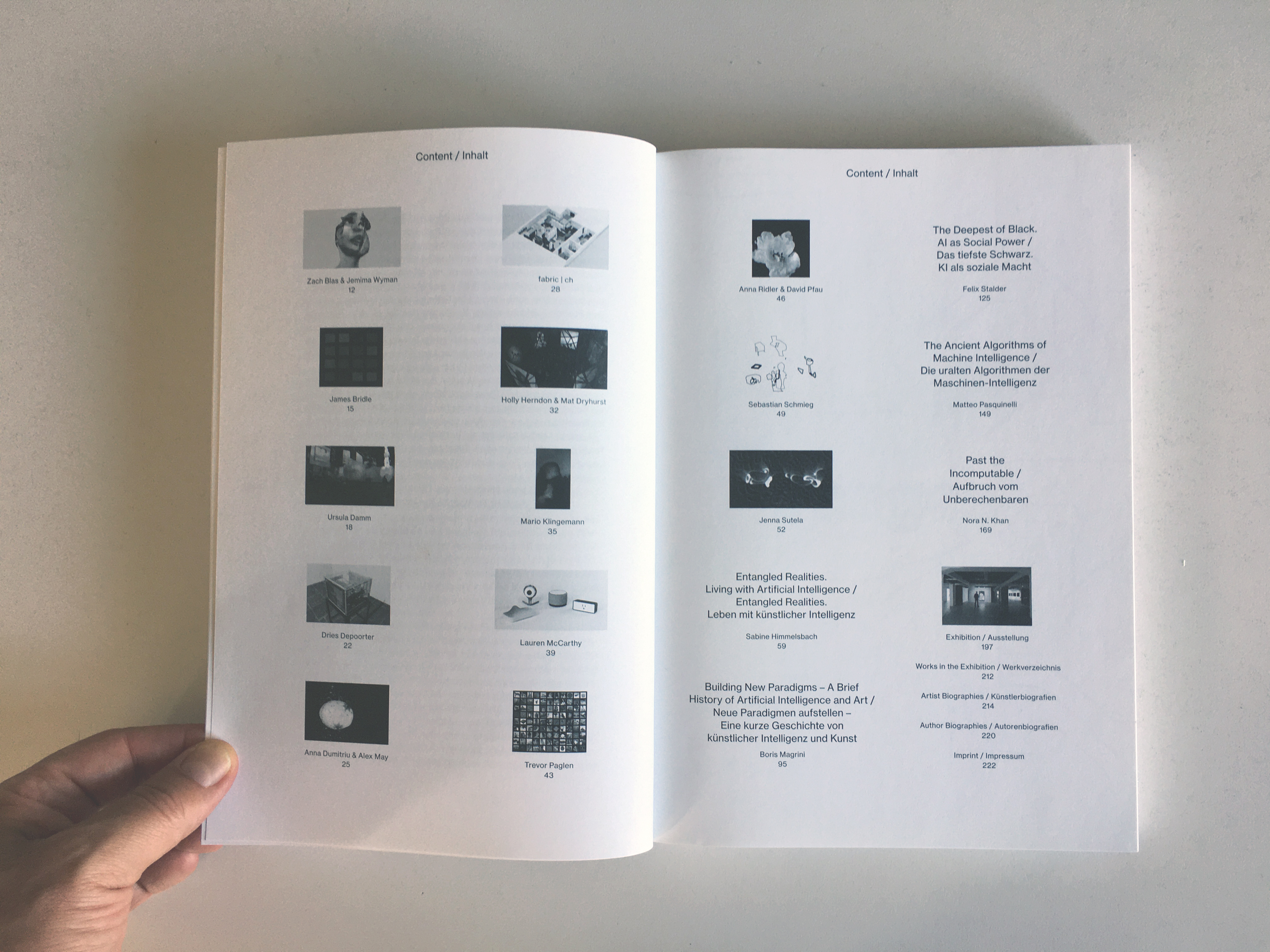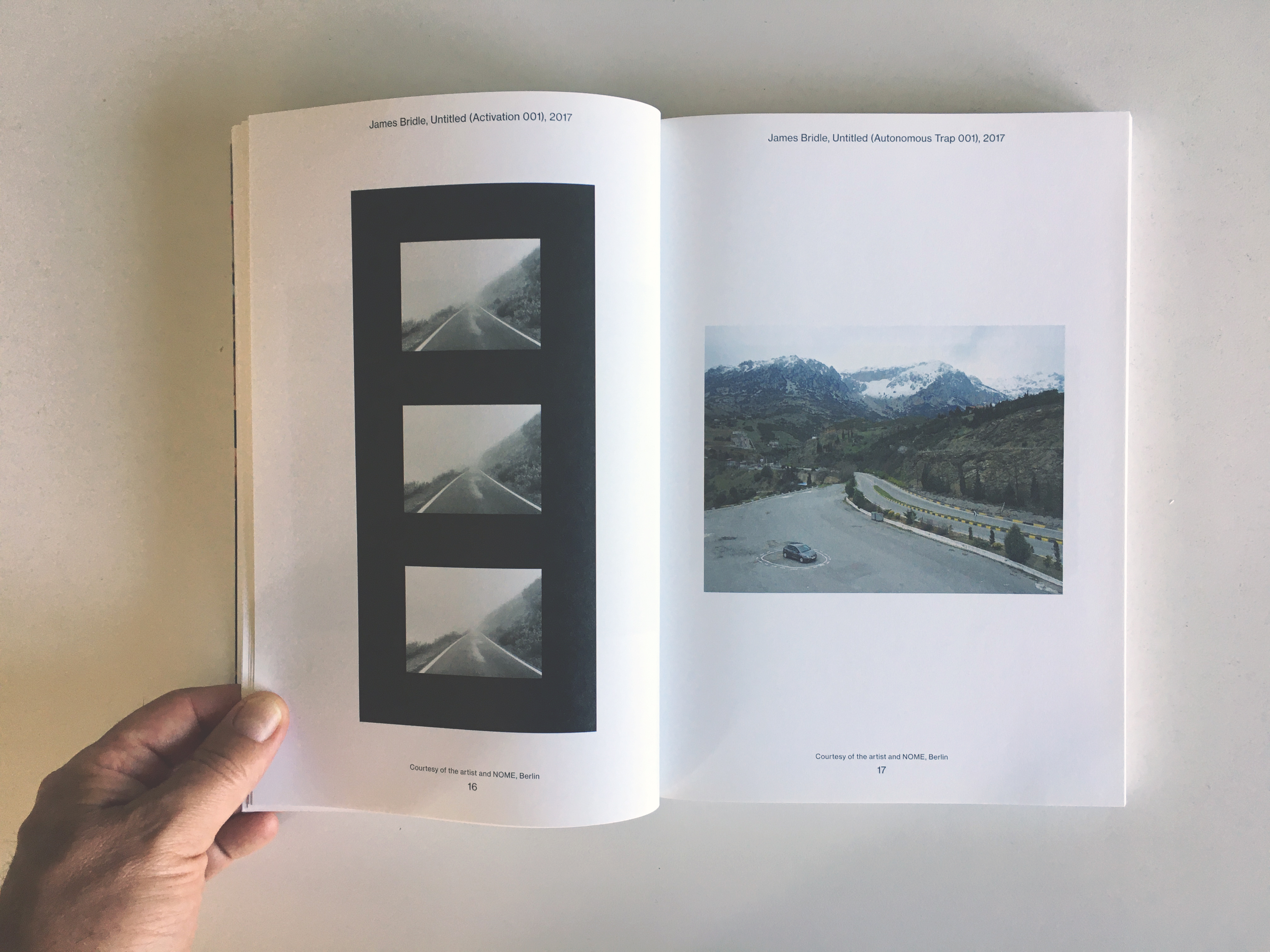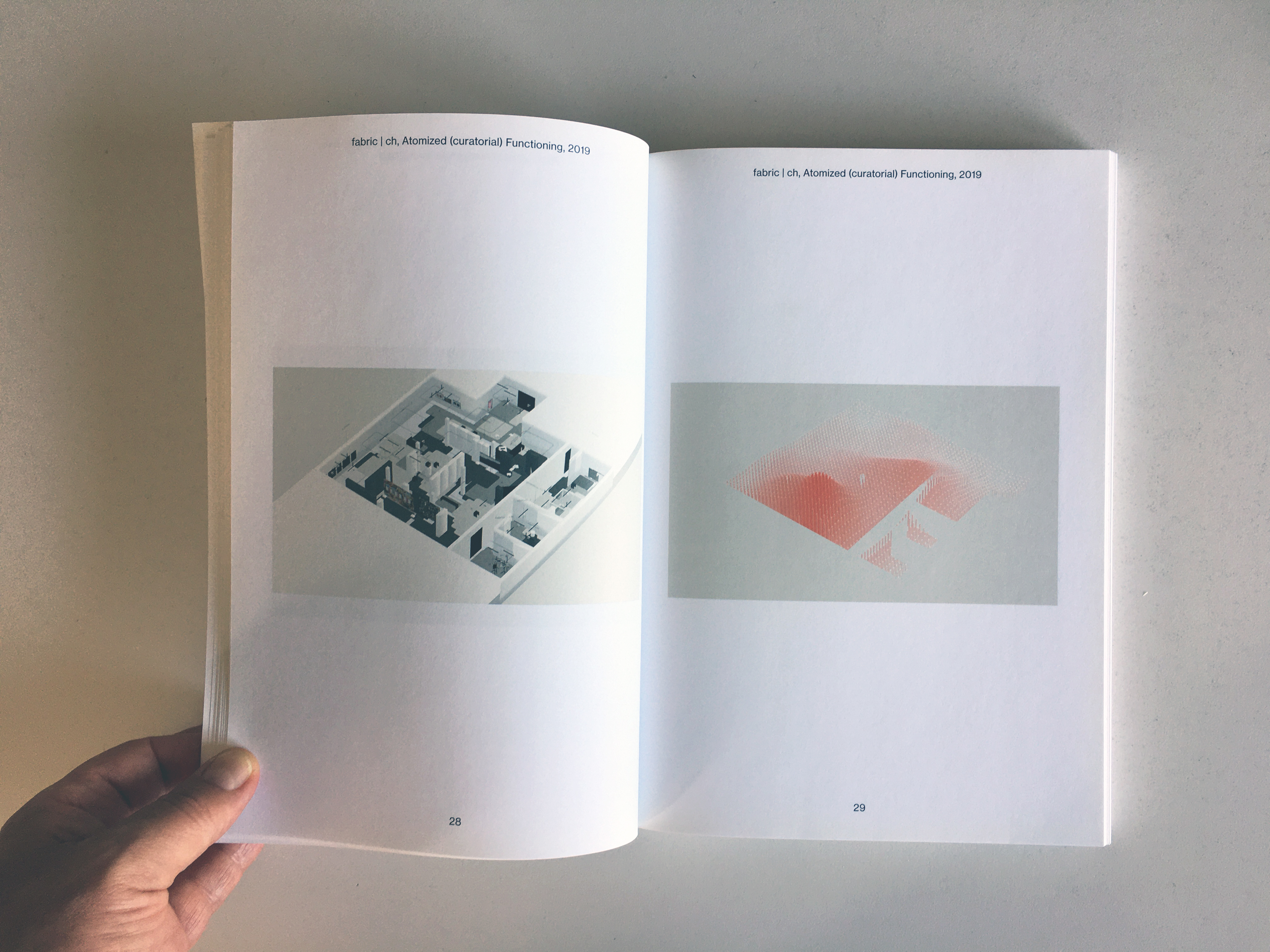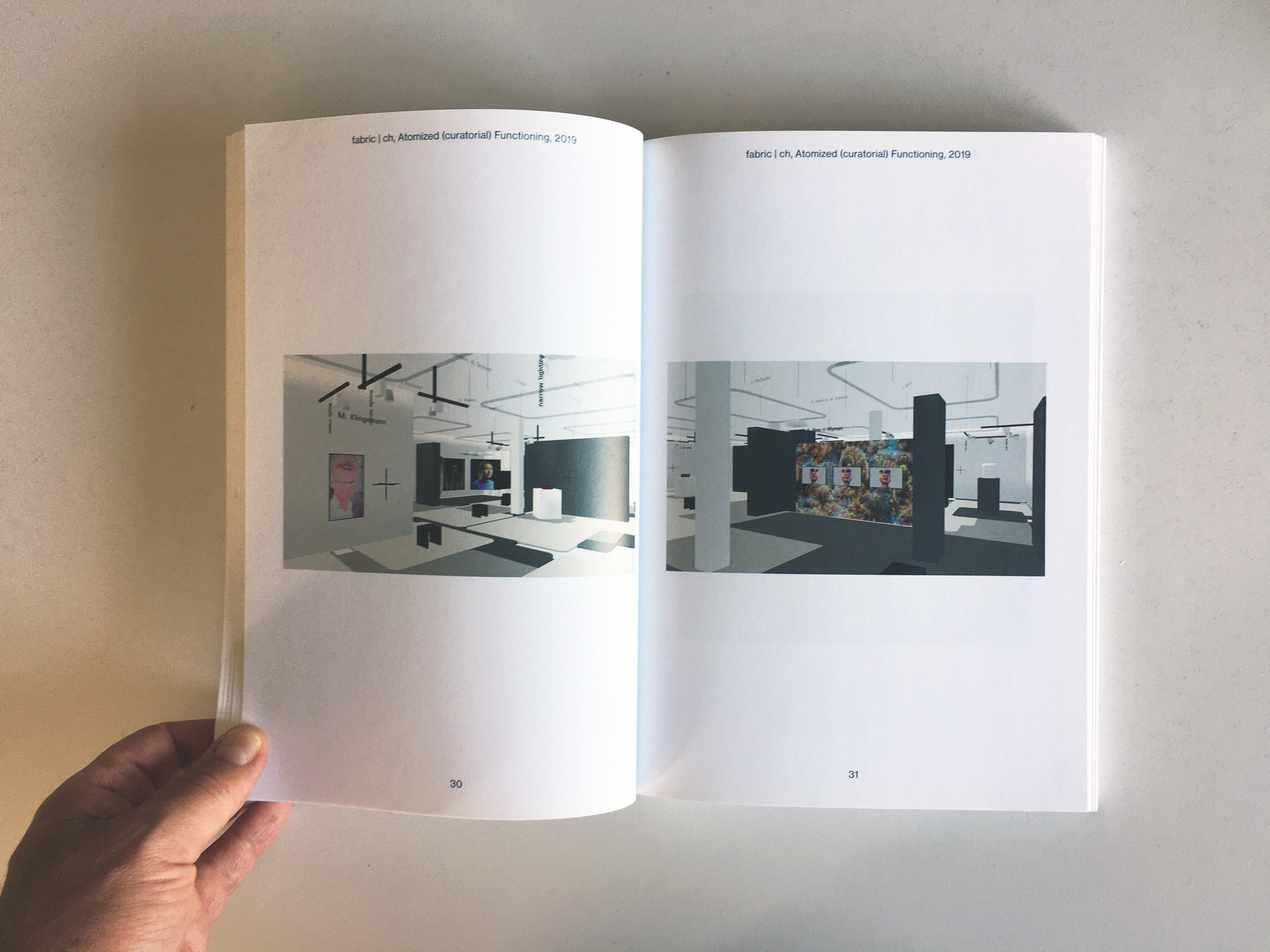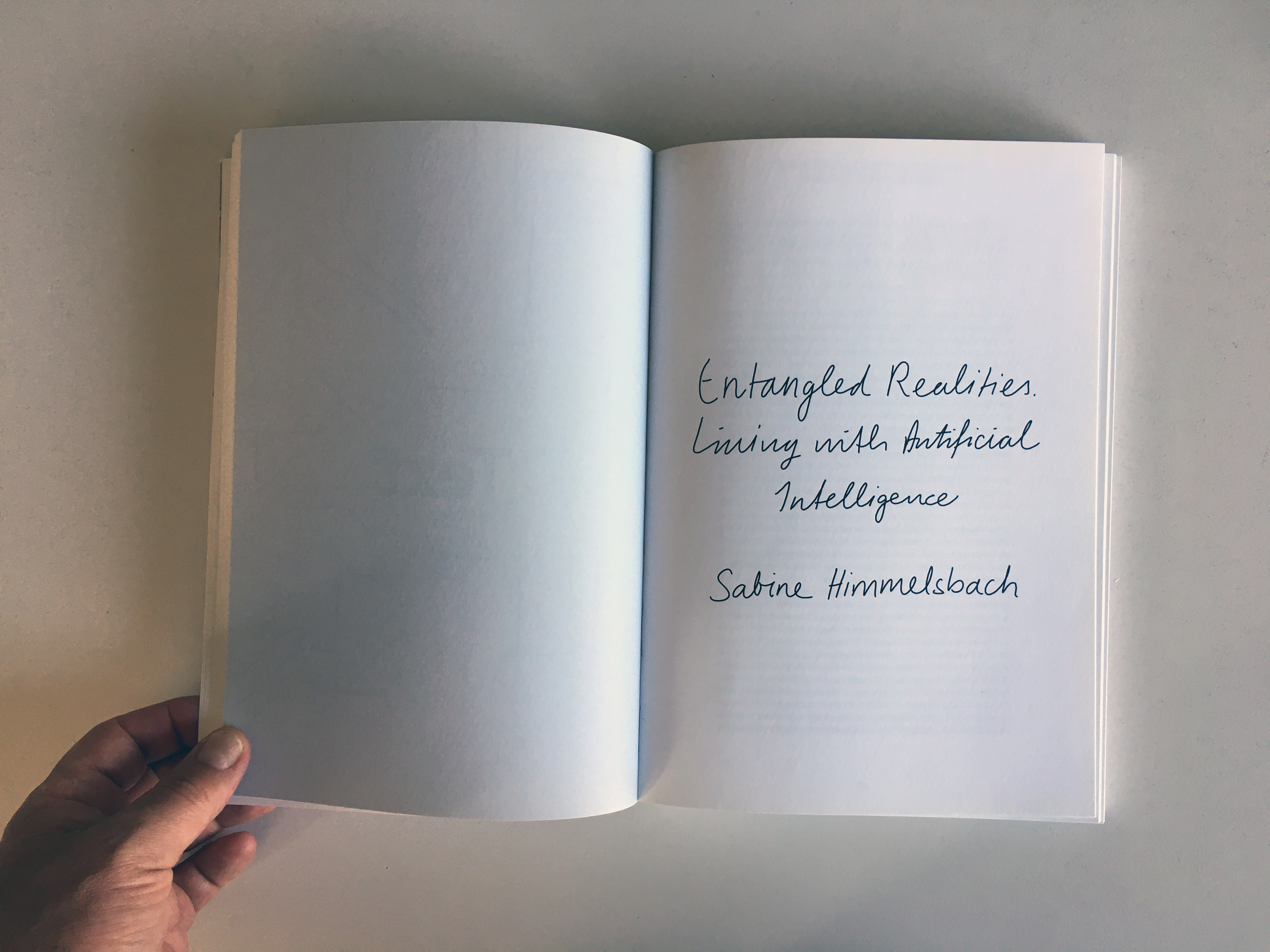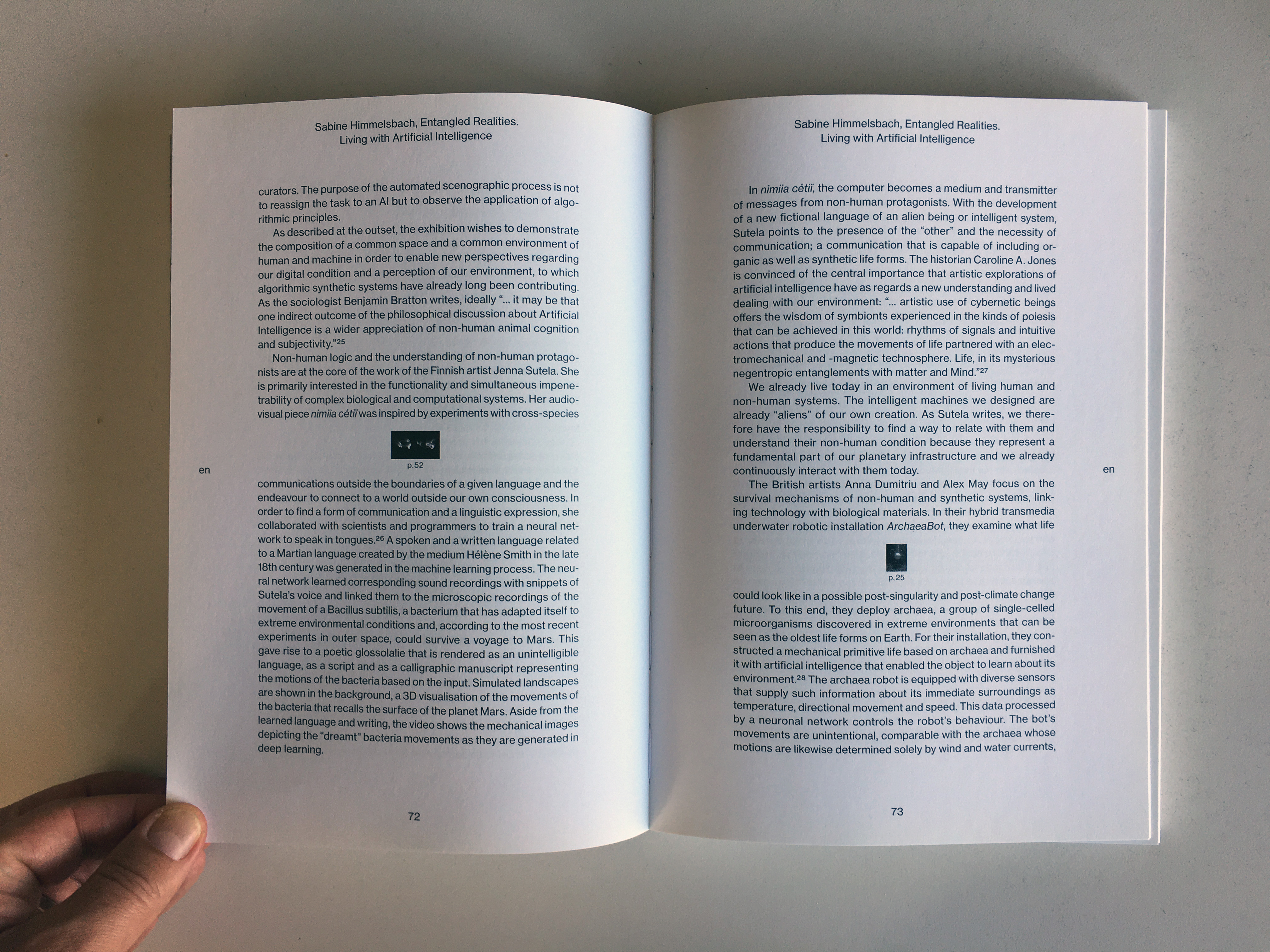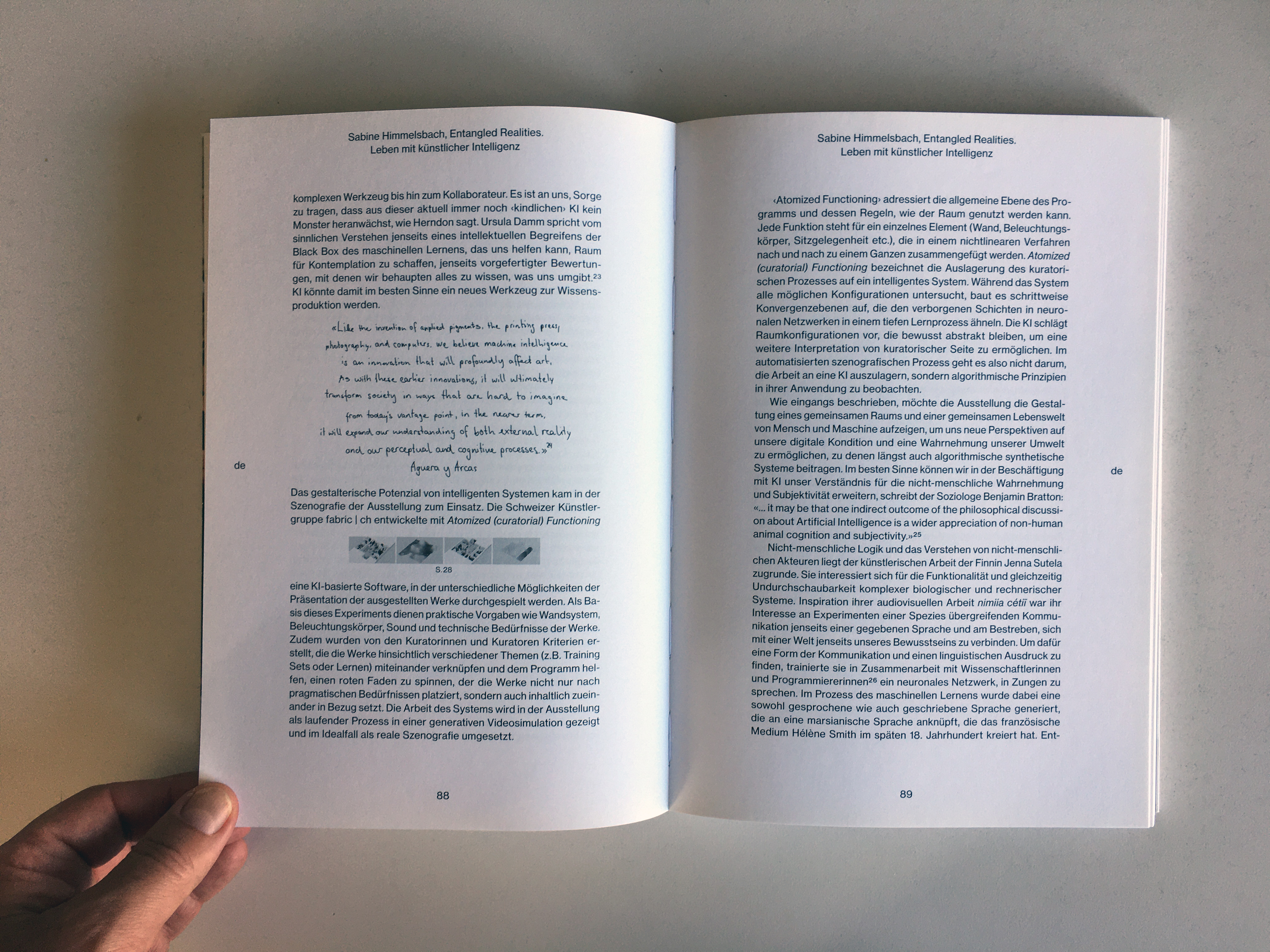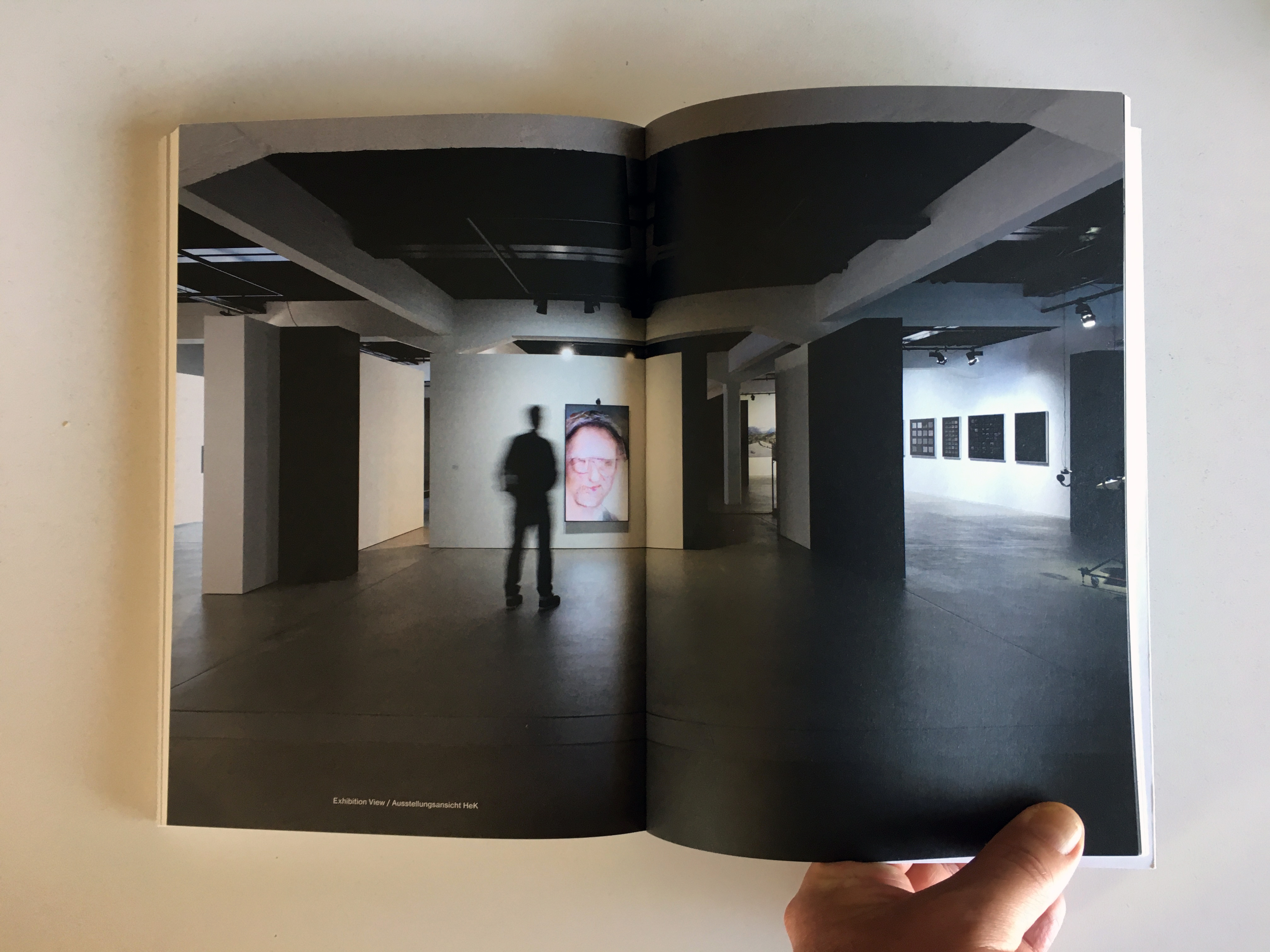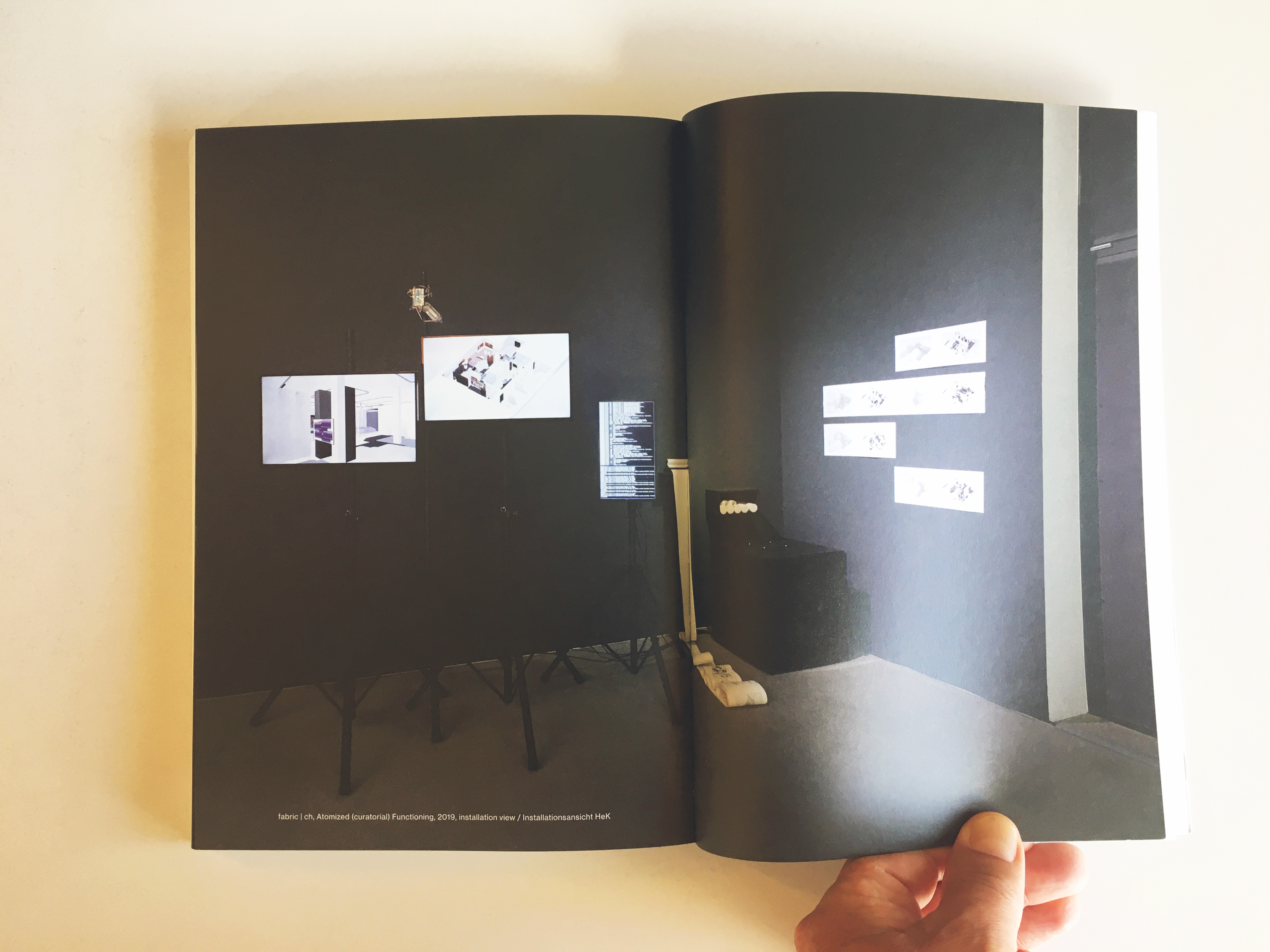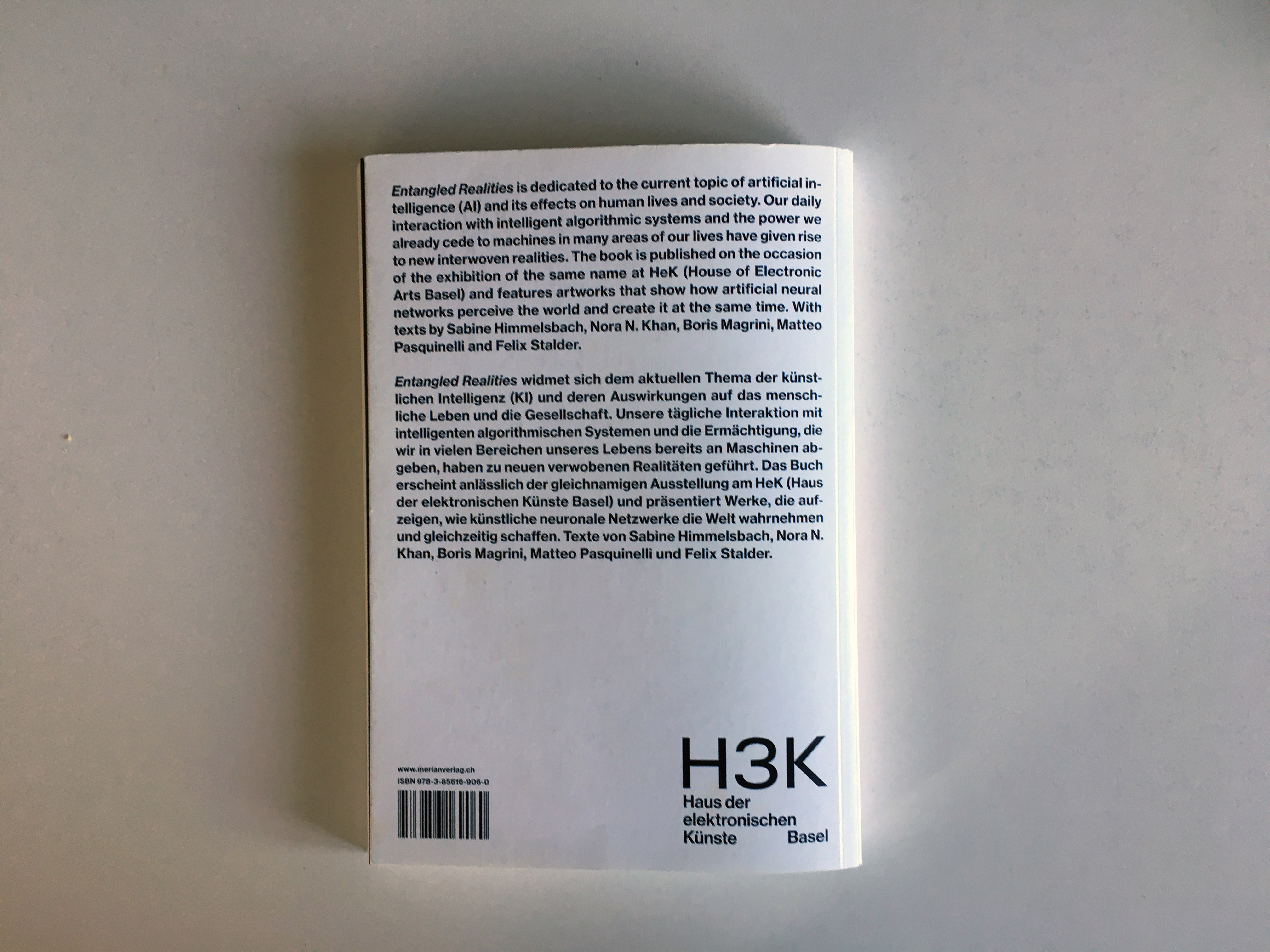Sticky Postings
All 242 fabric | rblg updated tags | #fabric|ch #wandering #reading
By fabric | ch
-----
As we continue to lack a decent search engine on this blog and as we don't use a "tag cloud" ... This post could help navigate through the updated content on | rblg (as of 09.2023), via all its tags!
FIND BELOW ALL THE TAGS THAT CAN BE USED TO NAVIGATE IN THE CONTENTS OF | RBLG BLOG:
(to be seen just below if you're navigating on the blog's html pages or here for rss readers)
--
Note that we had to hit the "pause" button on our reblogging activities a while ago (mainly because we ran out of time, but also because we received complaints from a major image stock company about some images that were displayed on | rblg, an activity that we felt was still "fair use" - we've never made any money or advertised on this site).
Nevertheless, we continue to publish from time to time information on the activities of fabric | ch, or content directly related to its work (documentation).
Monday, August 07. 2023
Satellite Daylight Pavilion (2017) at AC Cube in Chengdu (Sichuan, CN), during Chengdu Biennale | #pavilion #environmental # device
Note: Satellite Daylight Pavilion (2017) – pdf file documentation HERE – by fabric | ch is presented during Chengdu Biennale at AC Cube in Chengdu (Sichuan, CN).
The piece is an architectural experimentation, displayed as 4 videos in loops, and articulated around two "environmental devices", namely two Satellight Daylight pieces, which tend to reorganize and entertwine the natural rythms of day and night within the pavilion.
This creates a form of luminous phasing between two spatio-temporal referents (the localized one of London's Hyde Park and those of two fictitious satellites circling the Earth), hybridizing their time and space... in a quest for a new liveable relationship with the now mediated space.
The work is part of the exhibition Community of the Future: The Same Frequency and Resonance (images below) and is curated by Guo Jinman.
Via @fabricch_asfound (fabric | ch's default Instragram account)
Monday, May 08. 2023
Creation and Curation with Artificial Intelligence, Swissnex China Blog (Shanghai, 2022) | #talk #fabricch #automated
Note: this was a talk fabric | ch gave online, along with Aiiiii Art Center later last year, in the context of Swissnex Shanghai Art & Science talks.
The online session was moderated by Cissy Sun, Head of Art-Science at Swissnex and the topic was the "hot topic" of the time: "AI" and curation. fabric | ch has recently worked on several experimental or research projects related to this topic, as well as developed in-house tools along the way, and this was an opportunity to explain how we approach this question. In particular by rooting it in architectural thinking and our previous works.
Via Swissnex China
-----
By Cissy Sun
On 6th September, we had an inspiring discussion on curation and artificial intelligence with Mr. Patrick Keller, Architect & Co-founder of fabric | ch - studio for architecture, interaction & research, and Ms. Xi Li, Curator & Director of Aiiiii Art Center.
Mr. Patrick Keller introduced the architecture studio, fabric | ch, where architects and computer scientists work together on a variety of experimental projects that combine architecture, networks, data, and algorithms.
Delving into these projects, Patrick first introduced the work - Platform of Future-Past, which was shown at HOW Art Museum in Shanghai in 2022. “Platform of Future-Past” is an architectural device and monitoring installation, it is equipped in three zones with environmental monitoring devices. The sensors record as much data as possible over time, generated by the continuously changing conditions, presences, and uses in the exhibition space. The data is then stored on Platform Future-Past’s servers and replayed in a loop on its computers. It is a “recorded moment”, “frozen” on the data servers, that could potentially replay itself forever or is waiting for someone to reactivate it. A “data center” on the deck, with its set of interfaces and visualizations screens, lets the visitors-observers follow the ongoing recording process. However, as the exhibition was interrupted by the pandemic, the museum was closed for a few months, and the data from the real exhibition space was very limited. Thus the artists fed the platform the prepared data to generate the moving images. With the touch on artificial data, Patrick reminded us to think about massive ways to treat datasets while talking about artificial intelligence.

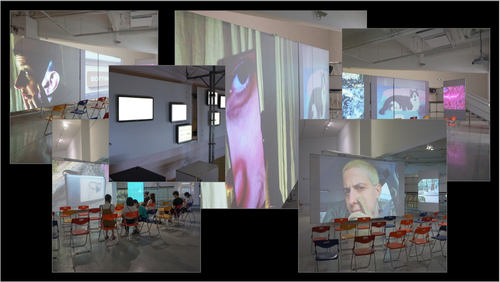
Platform of Future-Past, fabric | ch, 2022
The practice of using networks, data, and algorithms led the artists to develop a systematic approach to combining digital information with physical elements according to certain rules. Furthermore, such practices brought the artists to the exhibitions and curation projects. In the context of Entangled Realities, Living with Artificial Intelligence at the House of Electronic Arts (Basel), 2019, fabric | ch developed the work of Atomized (curatorial) Functioning (A(*)F), which was later also exhibited during Art and Science in the Age of Artificial Intelligence at the National Museum of China (Beijing), 2019.
A(*)F is an architectural project based on automated algorithmic principles, to which a machine learning layer can be added as required. It is a software piece that endlessly creates and saves new spatial configurations for a given situation, converges towards a “solution”, in real-time 3d and according to dynamic data and constraints. During the exhibition at HeK, the sensors collected data both from the artworks and the physical environment, including the walls and the lighting. The information collected by the sensors mapped out the space and helped the curators to organize the exhibition flows.

Atomized (curatorial) Functioning, fabric | ch, 2019
As an ending note, Patrick shared with us the ongoing research project between fabric | ch, the Nam June Paik Art Center (Yongin, South Korea), and ECAL / University of Art and Design, Lausanne (HES-SO), on "viewing rooms" and "digital exhibitions". The research is to give access to the collection of the art center in new ways and forms, out of the physical museum and through digital means. In addition to the research project, fabric | ch is also working on a new project about the digital presentation of the past exhibitions at ZKM (Center for Art and Media, Karlsruhe), the exhibition is planned to open at ZKM at the end of the year.
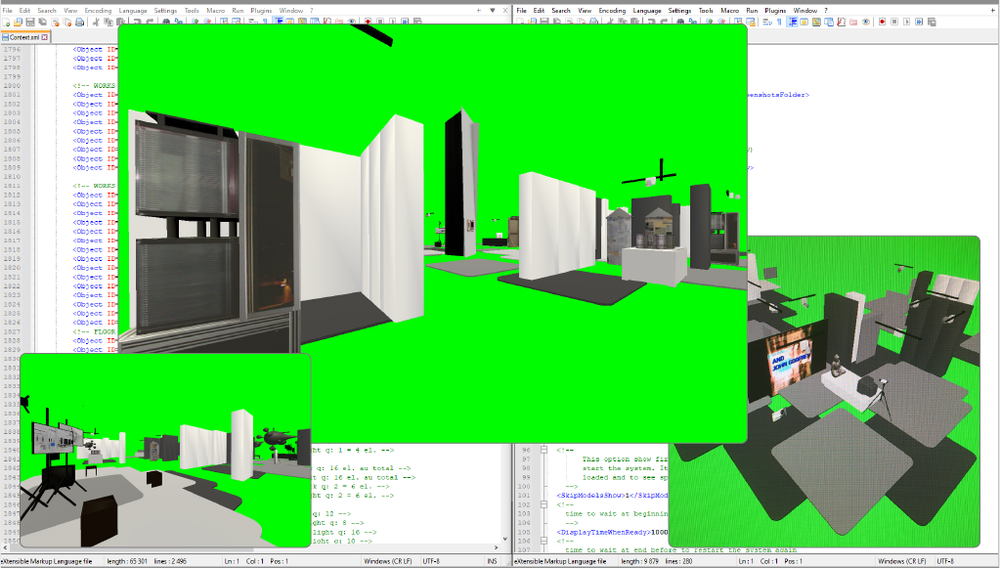
Ongoing project by fabric | ch
The International Conference on AI Art was co-organized by the Aiiiii Art Center and the Art and Artificial Intelligence Lab of Tongji University. With the theme of “AI and Authorship” (2021) and “Artificial Imagination” (2022), the conference combines the most radical of research from a diverse international curation of fields ranging from art, design, computational science, cultural critique as well as political philosophy. This network is established to pioneer and push the boundaries of artificial intelligence and creative production.
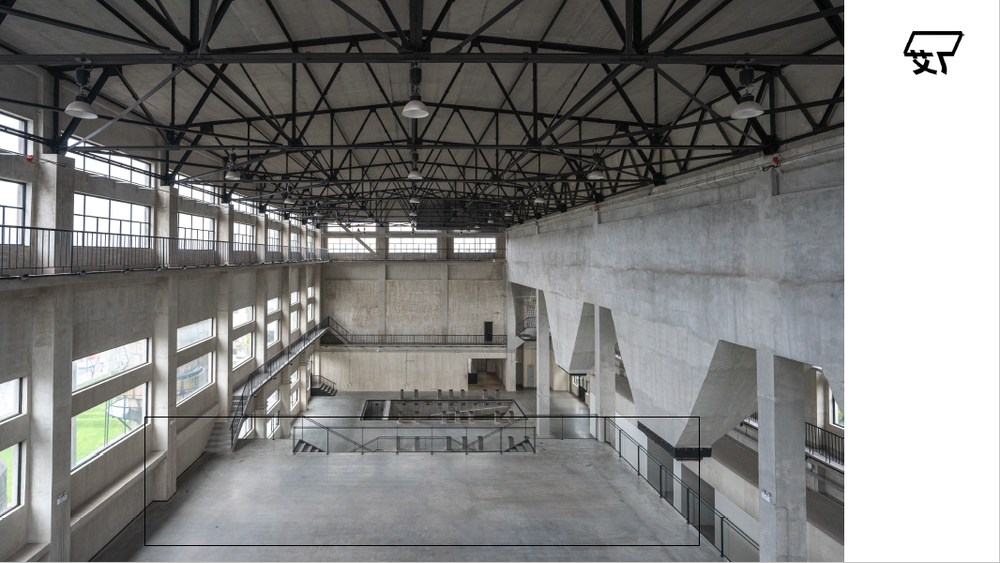
Exhibition space of Aiiiii Art Center
While looking at the exhibition space, two questions came to Xi’s mind: how to physicalize the digital artwork into the space and how to visualize AI art. The two questions lead Xi and her team to the curation concept of the Book of Sand. She chose literature to narrate the exhibition to catch the public attention and tell a good story of AI art. The exhibition starts by employing literary imagination to juxtapose seemingly infinite, random generative art and Borges’ “Book of Sand”, a book that possesses neither a beginning nor an end, just like sand. A book in which “I”, the subject, can turn the pages but cannot predict the outcome, just as we cannot fully comprehend the operational logic of the “black box” embedded by and into a neural network. Against the joy of possessing the book grows the fear that the book is not really infinite, just as we fear that the infinite productivity of AI will make us its captives, as well as the fear that its “infinite creativity” is simply the outcome of intelligent permutations of existing human ideas.

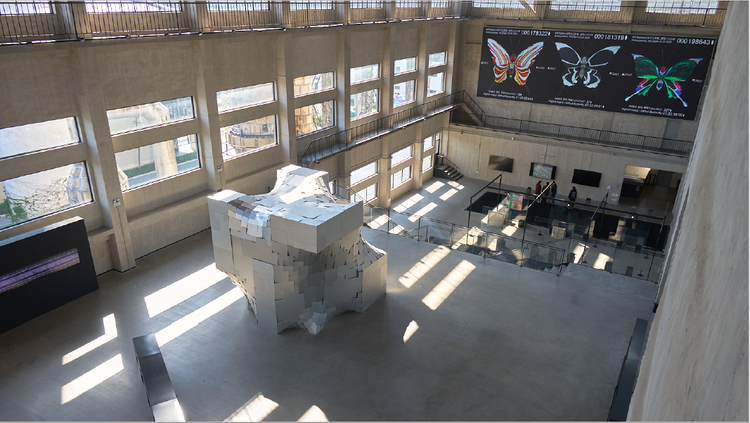
Artificial Remnants, Entangled Others Studio (left) & The Mind Scrap, Certain Measures (right)
“The Book of Sand” is an exhibition done by the joint efforts of machines and humans — the output of the machines interferes with human curatorial and artistic practices. By showcasing the works of Jake Elwes and Dabeiyuzhou, Xi explained further how they worked with the artists to turn web-based artwork into spatial installations.


The ZIZI Show, Jake Elwes (left) & Text Gene Project, Dabeiyuzhou (right)
It is inevitable to talk about what AI art is and who the author is when curating the programs and research projects at Aiiiii Art Center. However, such questions are not at the core of their curatorial practice but to discover the potential of AI itself and deliver the message appropriately to the target audience. With the involvement of machines in the creation and curation process, the question of the role of the machine became a challenging topic. Moreover, it also leads us to think – is there have to be a curator/creator’s name in the exhibition?
Responding to Xi’s question, Patrick pointed out that there are different cases dealing with the question. Taking their own practices, for example, the algorithm is at the core of their work. With the help of AI, the artists could dig deeper into their works, but the concept and the way of working are developed by the collective over years of research and practice. It is important to have their names in the exhibition as they are the creators of the work. Nevertheless, it might be challenging to define the creator for other works using open-source software and text-image software. However, in Patrick’s view, any machine learning program is fed with a huge dataset, without this, the algorithms could not do anything. The things the machines are trained to do and how they are trained to make it essential to define the creator.
Tuesday, January 17. 2023
Pro Helvetia – Visual Arts – Beneath the Skin, Between the Machines (2022) | #exhibition #bestof2022 #review
Note: fabric | ch is thrilled to be part of Pro Helvetia's Shanghai best of 2022! Thanks for this new post and for the support to the exhibition at the HOW Art Museum, as well as it's performances and online lectures program during the pandemic!
We were glad to see that the architectural installation fabric | ch realized in this context remained useful also for remote interaction, exchange of ideas and collaboration.
...
And it's also a way – and still the time – to wish everyone a good start in 2023! With, we hope, many successes, exciting projects and creative statements responding to the challenges of our time.
Via Pro Helvetia (Visual Arts)
-----
Our Best Picks of 2022
For art practitioners or audiences alike, it has not been an easy year. The path of global encounter seemed distant for a while, but has never vanished. Somehow we know, maybe in the most surprising manner, that we will meet each other again halfway. It could be one of these reassuring moments that convinced us of hope when the world is turned upside down: the flipping of bookpages, the smiles from digital rooms, a concert without performers, a recital without playwrights. We are so eager to present what has excited, motivated, or touched us in the past year. Scroll down and discover a diverse selection of projects highlighted under the three overarching themes -- support, connect, and inspire.
Wish you a brilliant start and a Happy New Year 2023!
Pro Helvetia Shanghai



Pro Helvetia Shanghai
Swiss Arts Council
Room 509, Building 1
No.1107, Yuyuan Road, Changning District
Shanghai 200050, China
shanghai@prohelvetia.cn
-----
Beneath the Skin, Between the Machines

Exhibition overview
---
---
“Man is only man at the surface. Remove the skin, dissect, and immediately you come to machinery.” When Paul Valéry wrote this down, he might not foresee that human beings – a biological organism – would indeed be incorporated into machinery at such a profound level in a highly informationized and computerized time and space. In a sense, it is just as what Marx predicted: a conscious connection of machine[1]. Today, machine is no longer confined to any material form; instead, it presents itself in the forms of data, coding and algorithm – virtually everything that is “operable”, “calculable” and “thinkable”. Ever since the idea of cyborg emerges, the man-machine relation has always been intertwined with our imagination, vision and fear of the past, present and future.
In a sense, machine represents a projection of human beings. We human beings transfer ideas of slavery and freedom to other beings, namely a machine that could replace human beings as technical entities or tools. Opposite (and similar, in a sense,) to the “embodiment” of machine, organic beings such as human beings are hurrying to move towards “disembodiment”. Everything pertinent to our body and behavior can be captured and calculated as data. In the meantime, the social system that human beings have created never stops absorbing new technologies. During the process of trial and error, the difference and fortuity accompanying the “new” are taken in and internalized by the system. “Every accident, every impulse, every error is productive (of the social system),”[2] and hence is predictable and calculable. Within such a system, differences tend to be obfuscated and erased, but meanwhile due to highly professional complexities embedded in different disciplines/fields, genuine interdisciplinary communication is becoming increasingly difficult, if not impossible.
As a result, technologies today are highly centralized, homogenized, sophisticated and commonized. They penetrate deeply into our skin, but beyond knowing, sensing and thinking. On the one hand, the exhibition probes into the reconfiguration of man by technologies through what’s “beneath the skin”; and on the other, encourages people to rethink the position and situation we’re in under this context through what’s “between the machines”. As an art institute located at Shanghai Zhangjiang Hi-Tech Industrial Development Zone, one of the most important hi-tech parks in China, HOW Art Museum intends to carve out an open rather than enclosed field through the exhibition, inviting the public to immerse themselves and ponder upon the questions such as “How people touch machines?”, “What the machines think of us?” and “Where to position art and its practice in the face of the overwhelming presence of technology and the intricate technological reality?” Departing from these issues, the exhibition presents a selection of recent works of Revital Cohen & Tuur Van Balen, Simon Denny, Harun Farocki, Nicolás Lamas, Lynn Hershman Leeson, Lu Yang, Lam Pok Yin, David OReilly, Pakui Hardware, Jon Rafman, Hito Steyerl, Shi Zheng and Geumhyung Jeong. In the meantime, it intends to set up a “panel installation”, specially created by fabric | ch for this exhibition, trying to offer a space and occasion for decentralized observation and participation in the above discussions. Conversations and actions are to be activated as well as captured, observed and archived at the same time.
[1] Karl Marx, “Fragment on Machines”, Foundations of a Critique of Political Economy
[2] Niklas Luhmann, Social Systems
---
fabric | ch, Platform of Future-Past, 2022, Installation view at HOW Art Museum.
Work by fabric | ch
HOW Art Museum has invited Lausanne-based artist group fabric | ch to set up a “panel installation” based on their former project “Public Platform of Future Past” and adapted to the museum space, fostering insightful communication among practitioners from different fields and the audiences.
“Platform of Future-Past” is a temporary environmental device that consists in a twenty meters long walkway, or rather an observation deck, almost archaeological: a platform that overlooks an exhibition space and that, paradoxically, directly links its entrance to its exit. It thus offers the possibility of crossing this space without really entering it and of becoming its observer, as from archaeological observation decks. The platform opens- up contrasting atmospheres and offers affordances or potential uses on the ground.
The peculiarity of the work consists thus in the fact that it generates a dual perception and a potential temporal disruption, which leads to the title of the work, Platform of Future-Past: if the present time of the exhibition space and its visitors is, in fact, the “archeology” to be observed from the platform, and hence a potential “past,” then the present time of the walkway could be understood as a possible “future” viewed from the ground…
“Platform of Future-Past” is equipped in three zones with environmental monitoring devices. The sensors record as much data as possible over time, generated by the continuously changing conditions, presences and uses in the exhibition space. The data is then stored on Platform Future-Past’s servers and replayed in a loop on its computers. It is a “recorded moment”, “frozen” on the data servers, that could potentially replay itself forever or is waiting for someone to reactivate it. A “data center” on the deck, with its set of interfaces and visualizations screens, lets the visitors-observers follow the ongoing process of recording.
The work could be seen as an architectural proposal built on the idea of massive data production from our environment. Every second, our world produces massive amounts of data, stored “forever” in remote data centers, like old gas bubbles trapped in millennial ice.
As such, the project is attempting to introduce doubt about its true nature: would it be possible, in fact, that what is observed from the platform is already a present recorded from the past? A phantom situation? A present regenerated from the data recorded during a scientific experiment that was left abandoned? Or perhaps replayed by the machine itself ? Could it already, in fact, be running on a loop for years?
---
Schedule
Duration: January 15-April 24, 2022
Artists: Revital Cohen & Tuur Van Balen, Simon Denny, fabric | ch, Harun Farocki, Geumhyung Jeong, Nicolás Lamas, Lynn Hershman Leeson, Lu Yang, Lam Pok Yin, David OReilly, Pakui Hardware, Jon Rafman, Hito Steyerl, Shi Zheng
Curator: Fu Liaoliao
Organizer: HOW Art Museum, Shanghai
Lead Sponsor: APENFT Foundation
Swiss participation is supported by Pro Helvetia Shanghai, Swiss Arts Council.
---
[Banner image: fabric | ch, Platform of Future-Past, 2022, Scaffolding, projection screens, sensors, data storage, data flows, plywood panels, textile partitions, Dimensions variable.]
Event I
Beneath the Skin, Between the Machines — Series Panel
Investigating Sensoriums: Beyond Life/Machine Dichotomy

Schedule
Organizers: HOW Art Museum, Pro Helvetia Shanghai, Swiss Arts Council
Date: March 19, 2022
Time : 15:00 -16:30 (CST) / 8:00 – 9:30 (CET)
Host: Iris Long
Guests: Zian Chen, Geocinema (Solveig Qu Suess, Asia Bazdyrieva), Marc R. Dusseiller
Language: Chinese, English (with Chinese translation)
Event on Zoom(500 audience limit)
Link: https://zoom.us/j/92512967837
---
This round of discussion derived from the participating speakers’ responses toward to the title of the exhibition, Beneath the Skin, Between The Machines.
What lies beneath the skin of the earth and between the machines may well be signals among sensors. Geocinema’s study on the One Belt One Road initiative and exploration of a “planetary” notion of cinema relate directly to the above concern. Marc R. Dusseiller as a transdisciplinary scholar draws our attention to the possible pathways that skin/machines may generate for understanding to go beyond life/machine dichotomy. Zian Chen’s recent research attempts to bring the mediatized explorations back to our real living conditions. He will resort to real news events as cases to show why these mediatized explorations are embodied experience.
HOW Art Museum in collaboration with Pro Helvetia Shanghai, Swiss Arts Council, invite Zian Chen (writer and curator), Geocinema (art collective) and Marc R. Dusseiller (transdisciplinary scholar and artist) to have a panel discussion, probing into the topic of Beneath the Skin, Between The Machines from the perspectives of their own practice and experience. The panel will be moderated by curator and writer Iris Long.
* Due to pandemic restrictions, the panel will take place online. Video recording of the panel will be played on Platform of Future-Past (2022), an environmental installation conceived by fabric | ch, studio for architecture, interaction and research, for the exhibition.
---
About the Host
Iris Long
About the Guests
Zian Chen, Geocinema, Marc R. Dusseiller
---
Event II

Schedule
Organizers: HOW Art Museum, Pro Helvetia Shanghai, Swiss Arts Council, Conversazione (CVSZ)
Date: April 16, 2022
Time : 14:00-15:30(CST)/ 7:00 – 8:30 (CET)
Host: Cai Yixuan
Guests:Chloé Delarue, fabric | ch, Pedro Wirz, Chun Shao
Language: Chinese, English (with Chinese translation)
Event on Zoom(500 audience limit)
Link: https://us06web.zoom.us/j/85822263121
---
In the hotbed to breed new forms of life, the notion of “life” and digital intimacy are under constant construction and development.
Unfolding the histories of nature and civilization, what kind of interactions could be perceived from the materials, which we constantly used in past narratives, and the environment? How have these interactive relationships, perceivable yet invisible, been evolving and entwined?
This Saturday from 14:00 to 15:30, HOW Art Museum in collaboration with Pro Helvetia Shanghai, Swiss Arts Council and Conversazione, research-based art and design collective based in China, invite Chloé Delarue, whose ongoing body of work centers on the notion of TAFAA – Towards A Fully Automated Appearance; fabric | ch, studio for architecture and research who present an environmental installation at HOW Art Museum where discussions and events could take place; Pedro Wirz whose practice seeks to merge the supernatural with scientific realities; and Shao Chun whose new media artistic practice is dedicated to combing traditional handicrafts and electronic programming to have a panel discussion.
The event intends to probe into the topics covered in Beneath the Skin, Between The Machines and participants will share with audience their insights to materials and media from the perspectives of their own practices. The panel will be moderated by curator Cai Yixuan.
---
About the Host
Cai Yixuan
About the Guests
Chloé Delarue, fabric | ch, Pedro Wirz, Chun Shao
---
Event III
Beneath the Skin, Between the Machines — Online Performance
Holding it together*: myself and the other by Jessica Huber

Schedule
Artist: Jessica Huber, in collaboration with the performers Géraldine Chollet & Robert Steijn, video by Michelle Ettlin
Date: May 31, 2022, 21:00-June 4, 24:00, 2022
Organizer: HOW Art Museum
Performance Support: Pro Helvetia Shanghai, Swiss Arts Council
Technical Support: Centre for Experimental Film (CEF)
Online Screening: Link
---
*Due to COVID-related prevention measures, this projection of the performance will take place online via CEF.
Performance projection will be played when the museum can reopen on Platform of Future-Past (2022), an environmental installation conceived by fabric | ch, studio for architecture, interaction and research, for the exhibition.
HOW Art Museum (Shanghai) will also be temporarily closed during this period.
---
About the artist
Jessica Huber works as an artist in the field of the performing arts and is also together with Karin Arnold a founding member of mercimax, a performance collective based in Zürich.
After finishing her dance studies in London, she danced for various dance companies and most of her early pieces have been dance pieces too. Though her recent work and the forms and formats she chooses, have become more diverse during the past few years. Recently she has been collaborating with the British artist and activist James Leadbitter aka the vacuum cleaner on the hope & fear project.
Jessica works with curiosity and has a special interest in the texture of relationships and in how we function as individuals and as communities in society. She regularly gives workshops to professionals and non-professionals (different social groups) and teaches as a guest tutor at the Hyperwerk in Basel (Institut for studies for Post Industrial Design – or as they call it “the place where we think about how we want to live together in the future”) and is one of two artists who are part of the newly founded dramaturgy pool of Tanzhaus Zürich. She deeply enjoys diversity and is fascinated by the many possible aesthetics of exchange and sharing.
---
About the performance

Picture in the dark: Fletcher/Huber, picture daytime: Ettlin/Huber *pictures from “holding it together”: Nelly Rodriguez
Holding it together*: myself and the other is first of all an encounter between the two performers Géraldine Chollet and Robert Steijn – and the underlying questions of what binds us together and how we create intimacy, playfulness and trust by sharing rituals and treatments with each other.
Two very different and differently old bodies nestle together, doing silent rituals of gentle intimacy. They explain, apparently quite privately, how they met at a party and worked with each other – one with, one without a plan – and what this resulted in. The Dutch performer with a penchant for Shamanism and the dancer from Lausanne offer each other a song, a dance and neither shy away from deep feelings…
“Holding it together” is a series of collaborations, performances and researches Jessica Huber created in collaboration with different artists. The first idea for ‘Holding it together’ sparked during her studio residency in Berlin in 2013. This led to a collection of ideas, approaches to movement and formats under the thematic umbrella: ‘Holding it together’. Four thematic chapters or acts stem from this period: – The Thing; The Mass; Myself; Myself & the other(s).
“Holding it together” is not only a reference to the series’ overarching theme of cooperation and the question of how we perceive and create our world, but also an announcement of the working method: At the core of this series were reflections about the aesthetics and praxis of exchange and sharing, about rituals, as well as the longing for space and time for encounter.
Wednesday, November 30. 2022
Atomized (re-)Staging, new work by fabric | ch on @beyondmatter and @zkm | #exhibition #digital #autonomous
Via
-----
Friday, October 28. 2022
Art x Science Dialogues: Curation In The Context of Artificial Intelligence - fabric | ch & Aiiiii Art Center Shanghai | #AI #exhibition #architecture
Note:
fabric | ch had the pleasure to present our recent works at the invitation of Swissnex China, during an online panel along with Ms. Xi Li, curator and director of the Aiiiii Art Center in Shanghai.
This was in particular the occasion to introduce Platform of Future-Past, a new installation and environmental device realized for the exhibition at How Art Center (Shanghai)
The panel was moderated by Cissy Sun, Head of Art-Science, Swissnex in China.
Via Swissnex China
-----
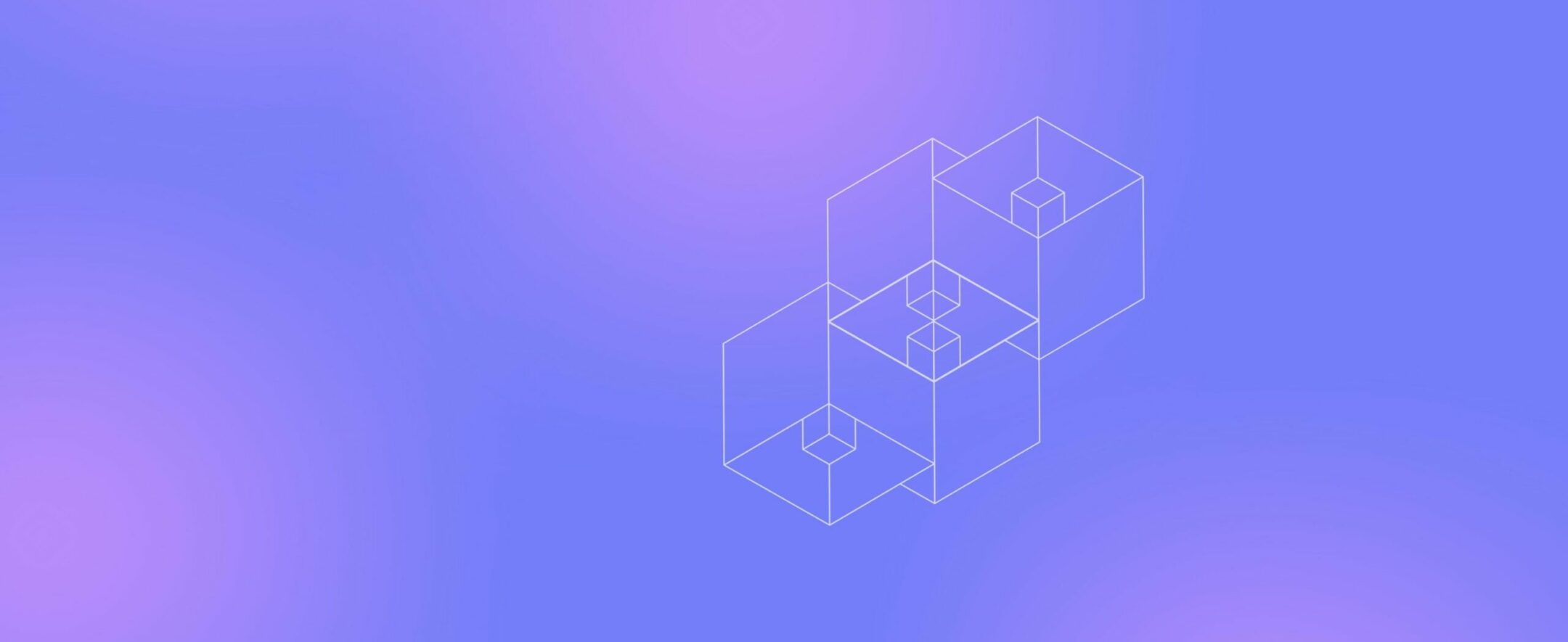
Art x Science Dialogues: Curation In The Context of Artificial Intelligence
Join the upcoming Art x Science Dialogue, exploring the topic of curation and artificial intelligence with Mr. Patrick Keller, Architect and Co-founder of fabric | ch and Ms. Xi Li, Curator and Director of Aiiiii Art Center.
---
When
Where
While the question of whether AI will take over the art world has been raised repeatedly, there seems to be a consensus in the art world that AI is a creative tool and that we should make better use of it. And it is the same with curation. Using algorithms in content curation and spatial design, implementing AI systems in museums, curating on generative artworks and etc. are the new issues facing today’s curators.
In the upcoming edition of Art x Science Dialogue, we’ll invite Mr. Patrick Keller, Architect and Co-founder of fabric | ch, and Ms. Xi Li, Curator and Director of Aiiiii Art Center, to join the conversation on the topic of curation and artificial intelligence.
Patrick Keller will present the works from their Collective – fabric | ch, featuring Atomized (curatorial) Functioning. It is an architectural project based on automated algorithmic principles, to which a machine learning layer can be added as required. It is a software piece that endlessly creates and saves new spatial configurations for a given situation and converges towards a “solution”, in real-time 3d and according to dynamic data and constraints. While Xi Li will present her research on AI art curation and her perspectives and practices in curating the exhibitions at Aiiiii Art Center. It is a brand new artificial intelligence art institution based in Shanghai, aiming to offer insight into the many challenges, practices, and creative modes of artificial intelligence-based art.
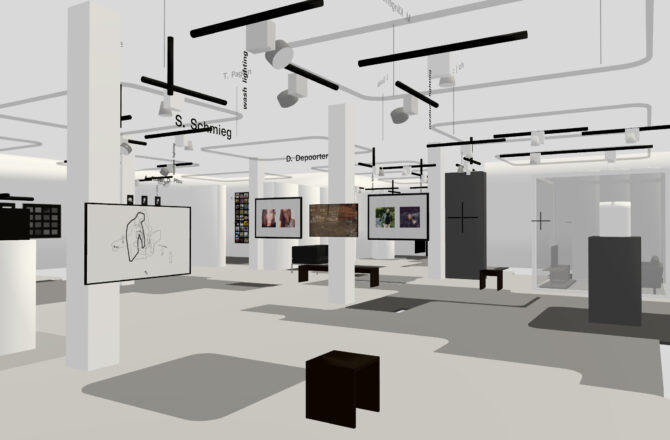
Atomized (curatorial) Functioning, by fabric | ch
---
PROGRAM
16:00 – 16:05 Opening Remarks
Cissy Sun, Head of Art-Science, Swissnex in China
16:05 – 16:25 Presentation
Patrick Keller, Architect, Co-founder, fabric | ch
16:25 – 16:45 Presentation
Xi Li, Curator, Director, Aiiiii Art Center
16:45 – 17:00 Discussion and Q&A
SPEAKERS
---
fabric | ch – studio for architecture, interaction & research
Combining experimentation, exhibition, and production, fabric | ch formulates new architectural proposals and produces singular livable spaces that bind localized and distributed landscapes, algorithmic behaviors, atmospheres, and technologies.
Since the foundation of the studio, the architects and scientists of fabric | ch have investigated the field of contemporary space in its interaction with technologies. From network-related environments that blend physical and digital properties to algorithmic recombination of locations, temporalities, and dimensions based on the objective sensing of their environmental data, it is the nature of our relationship to the environment and to contemporary space that is rephrased.
The work of fabric | ch deals with issues related to the mediation of our relationship to place and distance, to automated climatic, informational, and energetic exchanges, to mobility and post-globalization, all inscribed in a perspective of creolization, spatial interbreeding, new materialism, and sustainability.
fabric | ch is currently composed of Christian Babski, Stéphane Carion, Christophe Guignard and Patrick Keller (cofounders of the collective), Keumok Kim and Michaël Chablais.
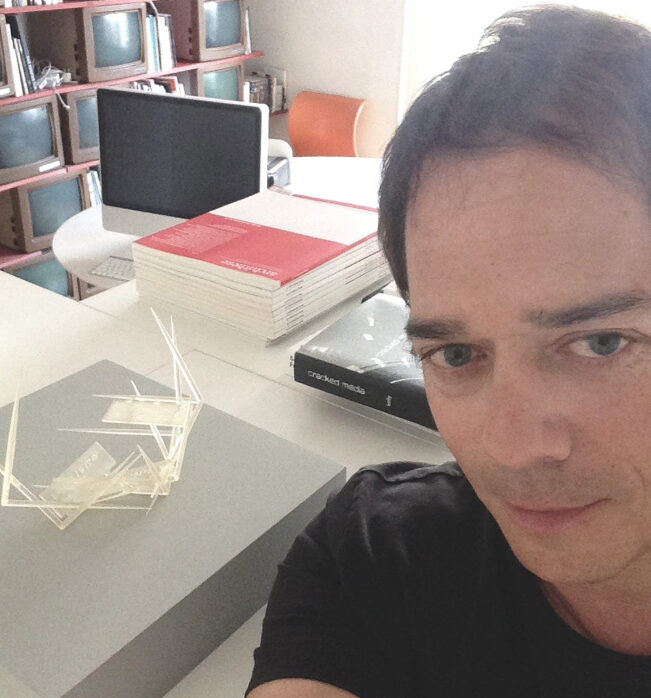
Patrick Keller is an architect and founding member of the collective fabric | ch, composed of architects, artists, and engineers, based in Lausanne, Switzerland.
In this context, he has contributed to the creation, development, and exhibition of numerous experimental works dealing with the intersection of architecture, networks, algorithms, and data, along with livable environments.
---
Aiiiii Art Center
Aiiiii Art Center (Est. 2021) is an artificial intelligence art institution based in Shanghai. The organization seeks to support, promote, as well as incubate both international and domestic artists and projects related to intelligent algorithms. Aiiiii Art Center is committed to becoming a pioneer of artificial intelligence through the discovery of exciting possibilities afforded by the intersections of creativity and technology.
Aiiiii Art Center aims to offer insight into the many challenges, practices, and creative modes of artificial intelligence-based art. Such aims will be achieved through academic conferences and published research efforts conducted either independently or in collaboration with domestic and international institutions and organizations. This organization will also actively promote and showcase the exploratory uses of artificial intelligence-based art in practice.
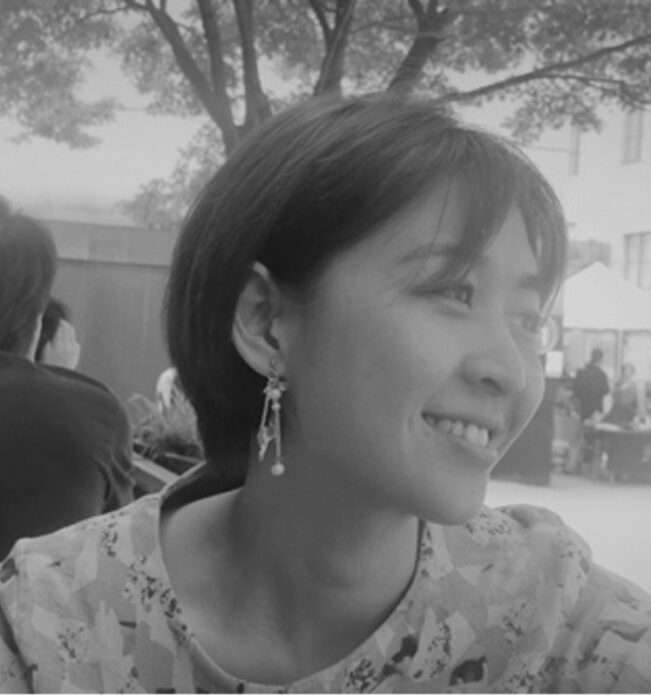
Xi Li, curator, director of Aiiiii Art Center. Graduated from Central Saint Martins MA in Narrative Environments and Central Academy of Fine Arts with a BA in Art Management.
Programs: Book of Sand: The Inaugural Exhibition of Aiiiii Art Center (2021); aai International Conference on AI Art (2021, 2022); Ritual of Signs and Metamorphosis (2018); Olafur Eliasson: The Unspeakable Openness of Things (2017);Captive of Love: Danwen Xing (2017); Over Time: The Poetic Image of the Urbanscape (2016).
---
ART X SCIENCE DIALOGUES
Art x Science Dialogues is a new webinar series initiated by Swissnex in China in 2020. The webinar series not only presents artistic projects where scientists and research engineers are deeply involved but also looks into new interdisciplinary initiatives and trends. Through the dialogues between artists and scientists, we try to stimulate the exchange of ideas between the two different worlds and explore opportunities for collaboration.
Tuesday, August 31. 2021
Entangled Realities, HeK exhibition catalogue (eds. S. Himmelsbach & B. Magrini), C. Merian Verlag (Basel, 2021) | #AI #art #environments
Note: this publication was released at the occasion of the exhibition Entangled Realities - Living with Artificial Intelligence, curated by Sabine Himmelsbach & Boris Magrini at Haus der elektronischen Künste, in Basel.
The project Atomized (curatorial) Functioning (pdf), part of the Atomized (*) Functioning serie, was presented, used and debatedi n this context.
-----
By Patrick Keller
Saturday, February 17. 2018
Environmental Devices retrospective exhibition by fabric | ch until today! | #fabric|ch #accrochage #book
Note: a few pictures from fabric | ch retrospective at #EphemeralKunsthalleLausanne (disused factory Mayer & Soutter, nearby Lausanne in Renens).
The exhibition is being set up in the context of the production of a monographic book and is still open today (Saturday 17.02, 5.00-8.00 pm)!
By fabric | ch
-----
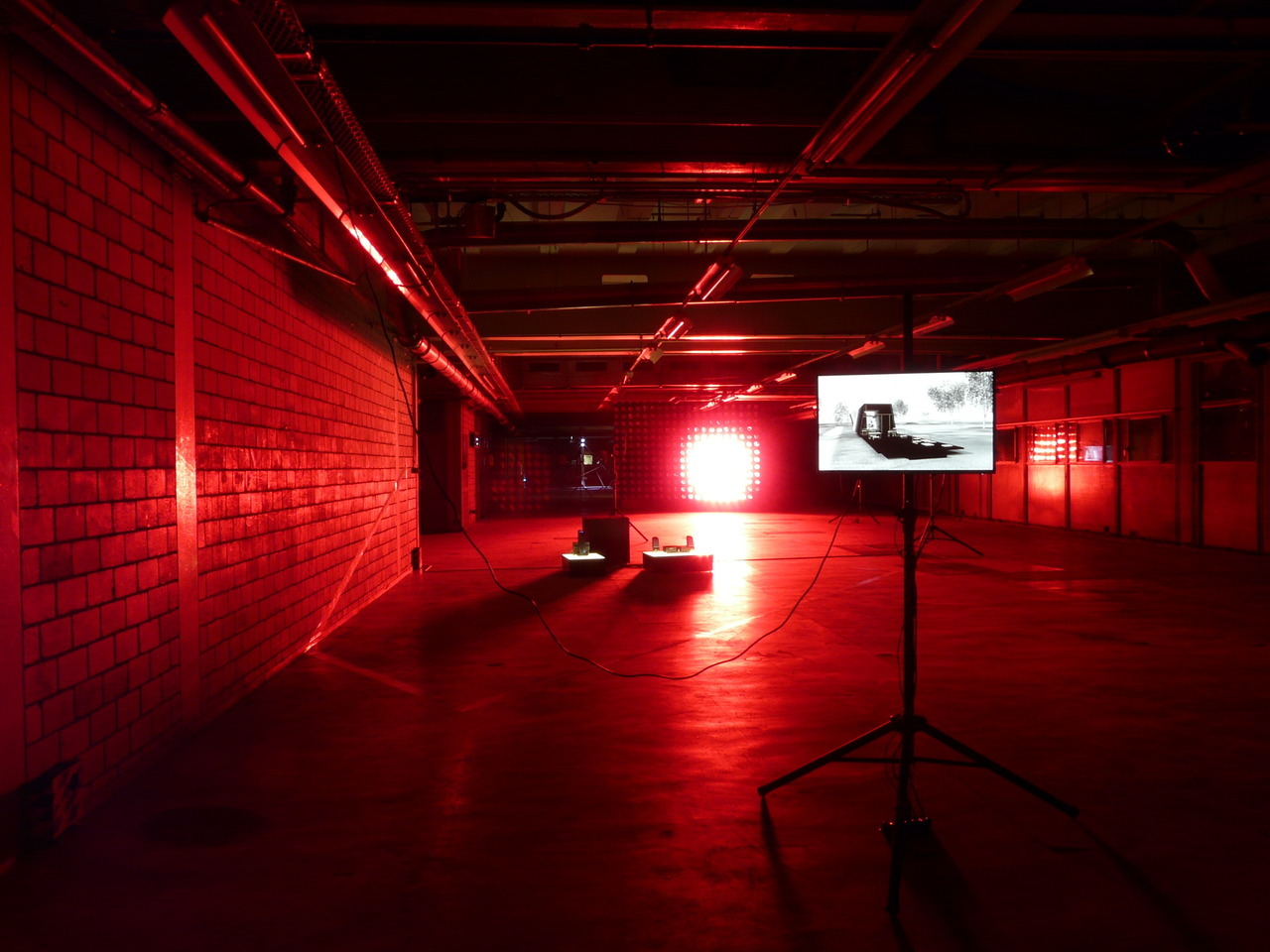
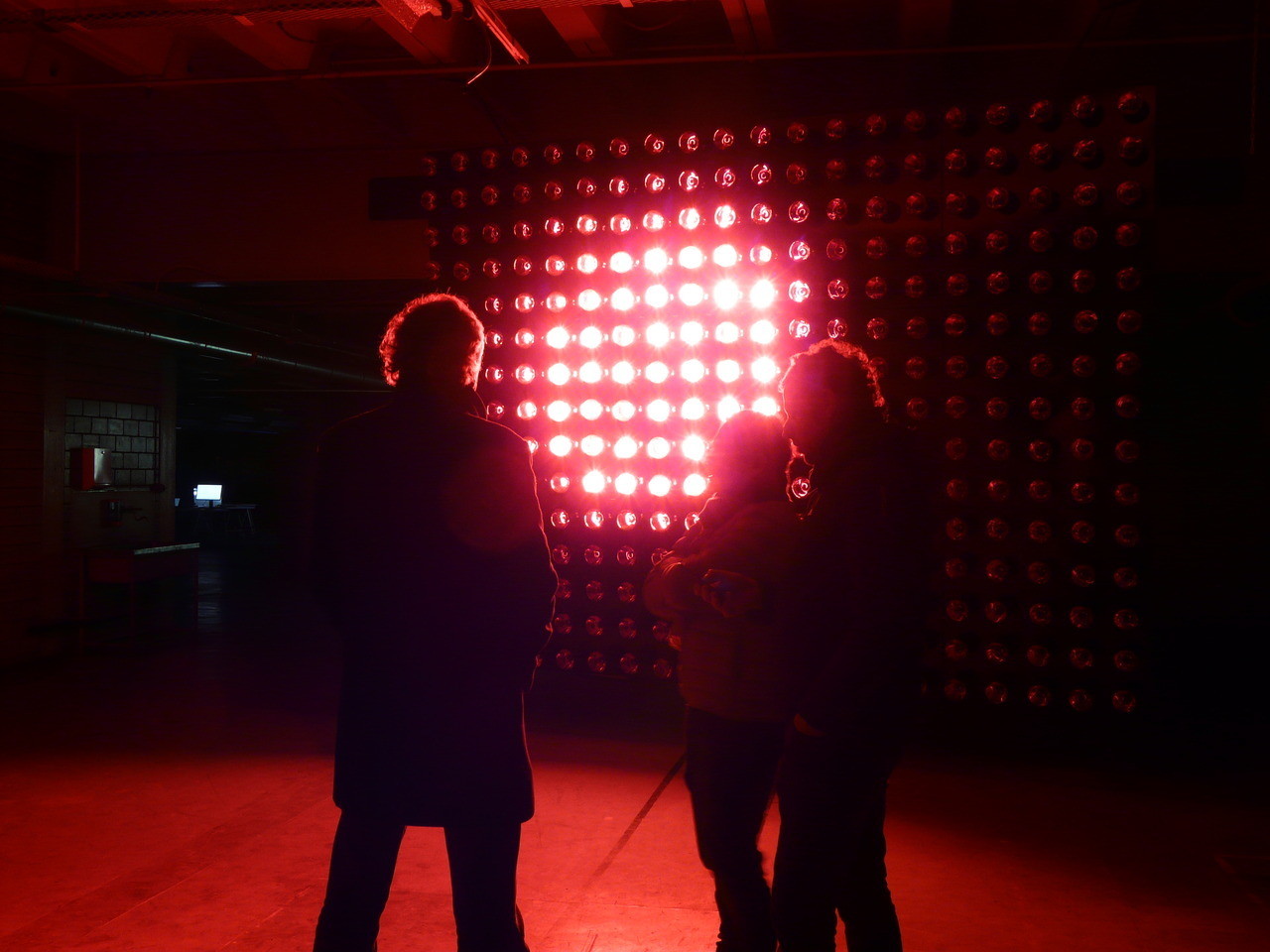
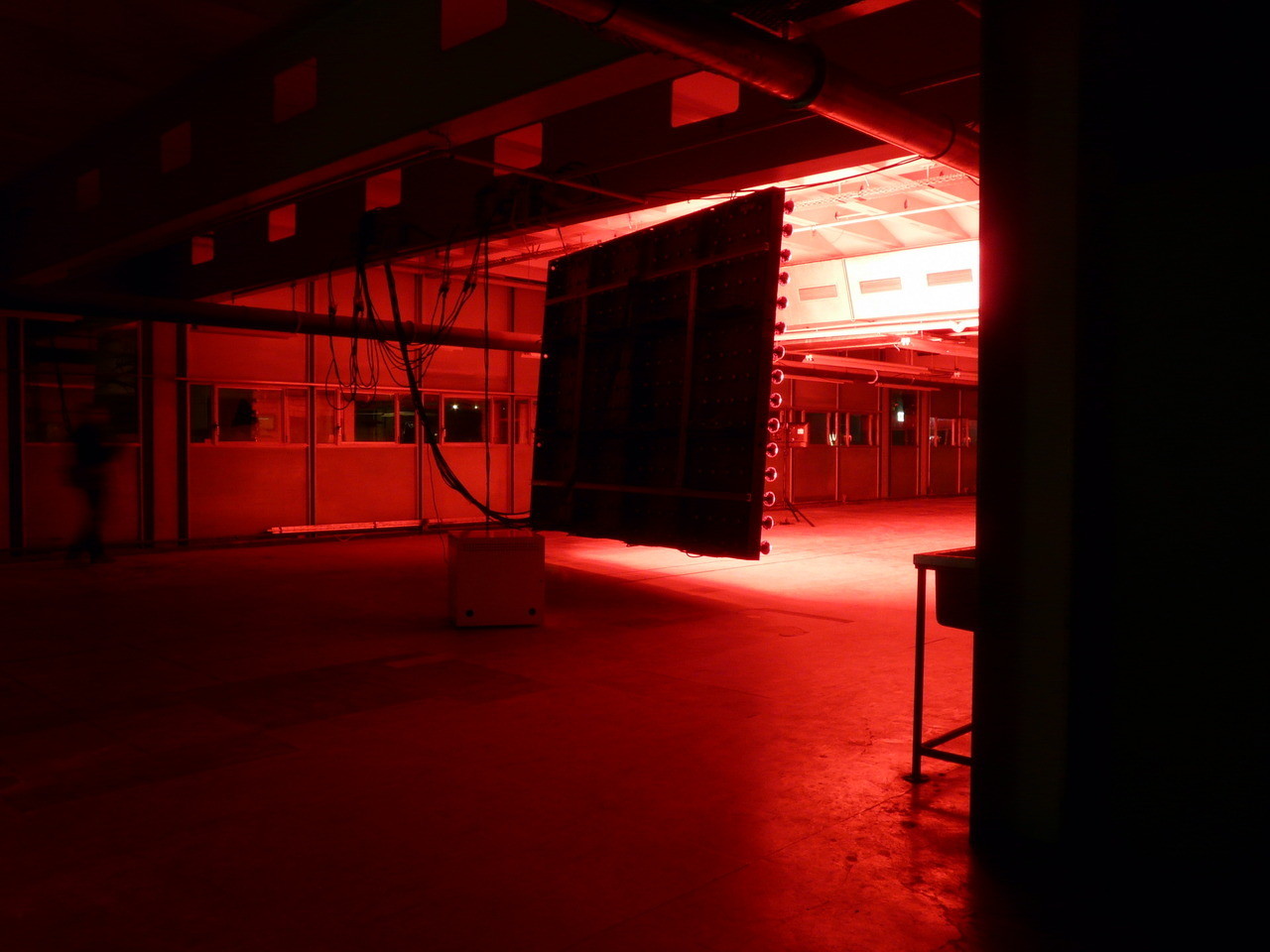
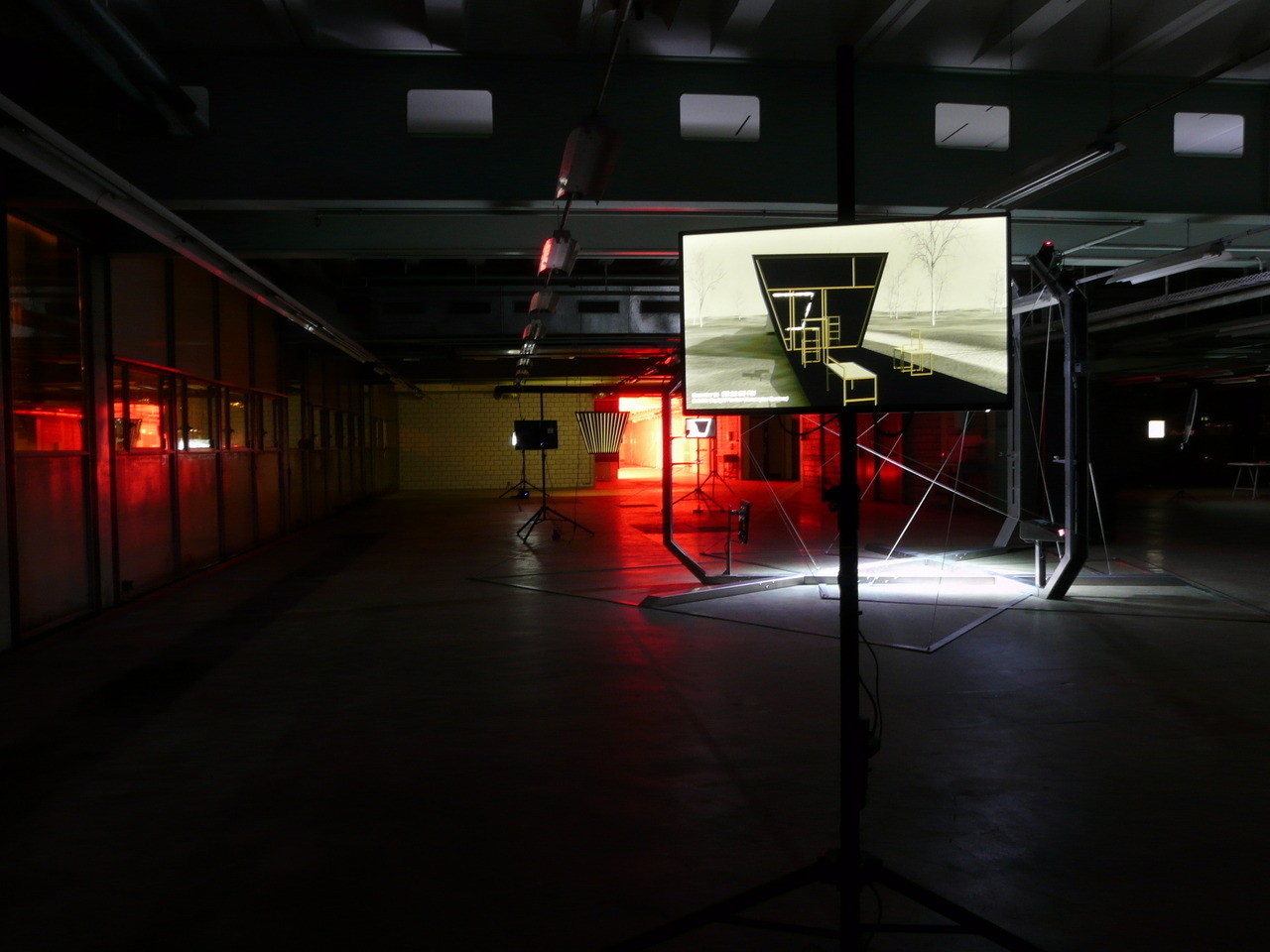
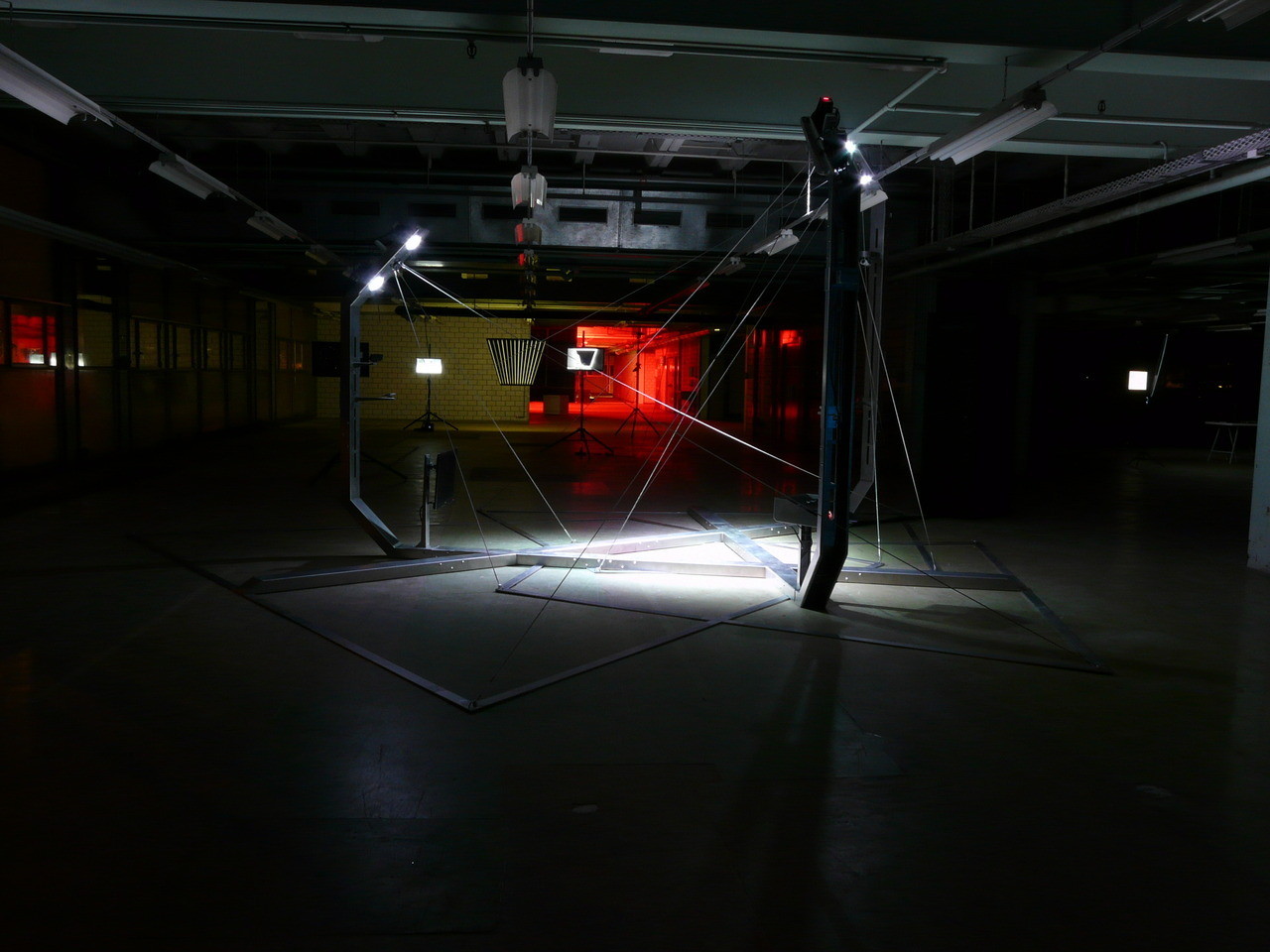
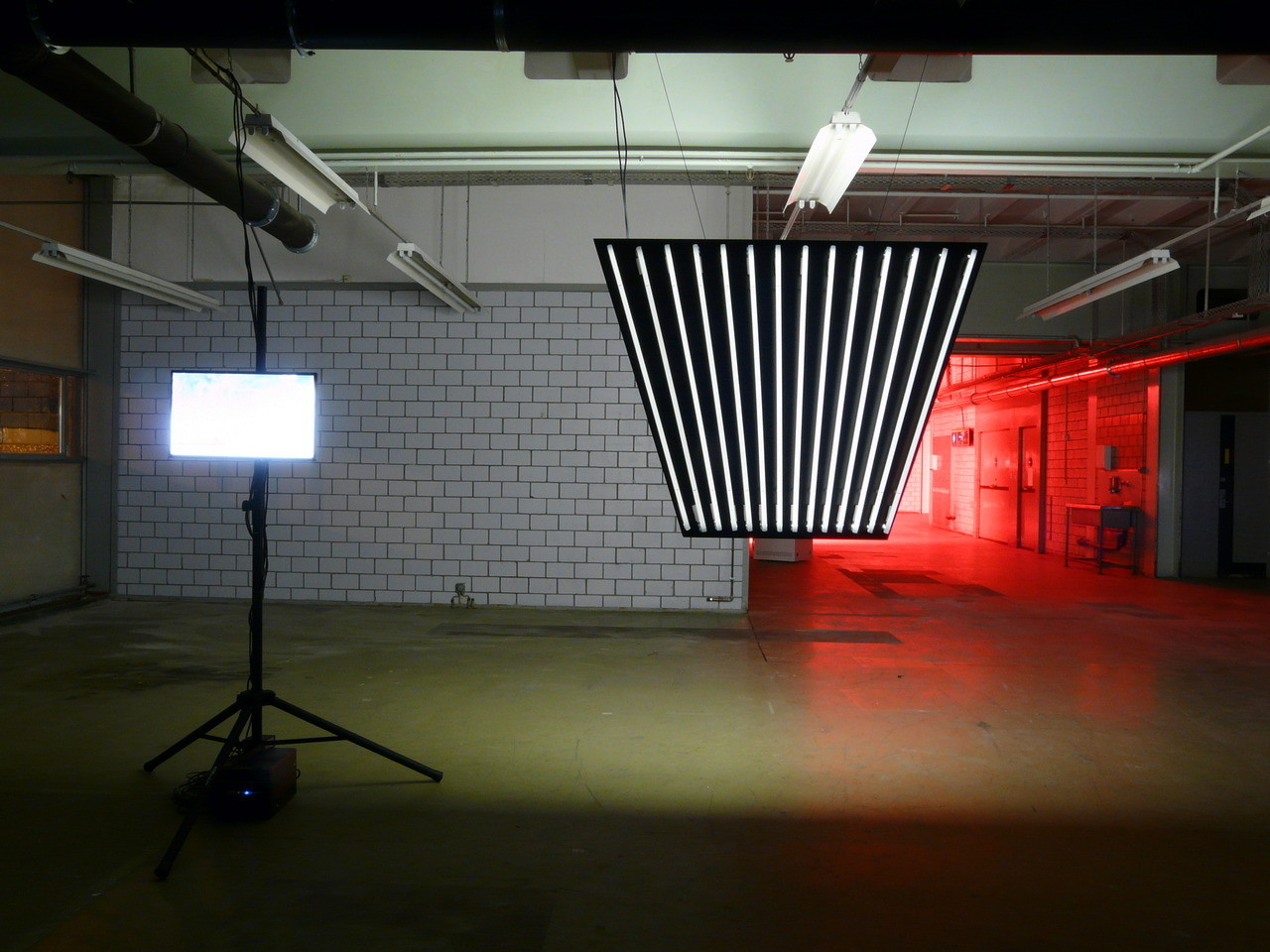
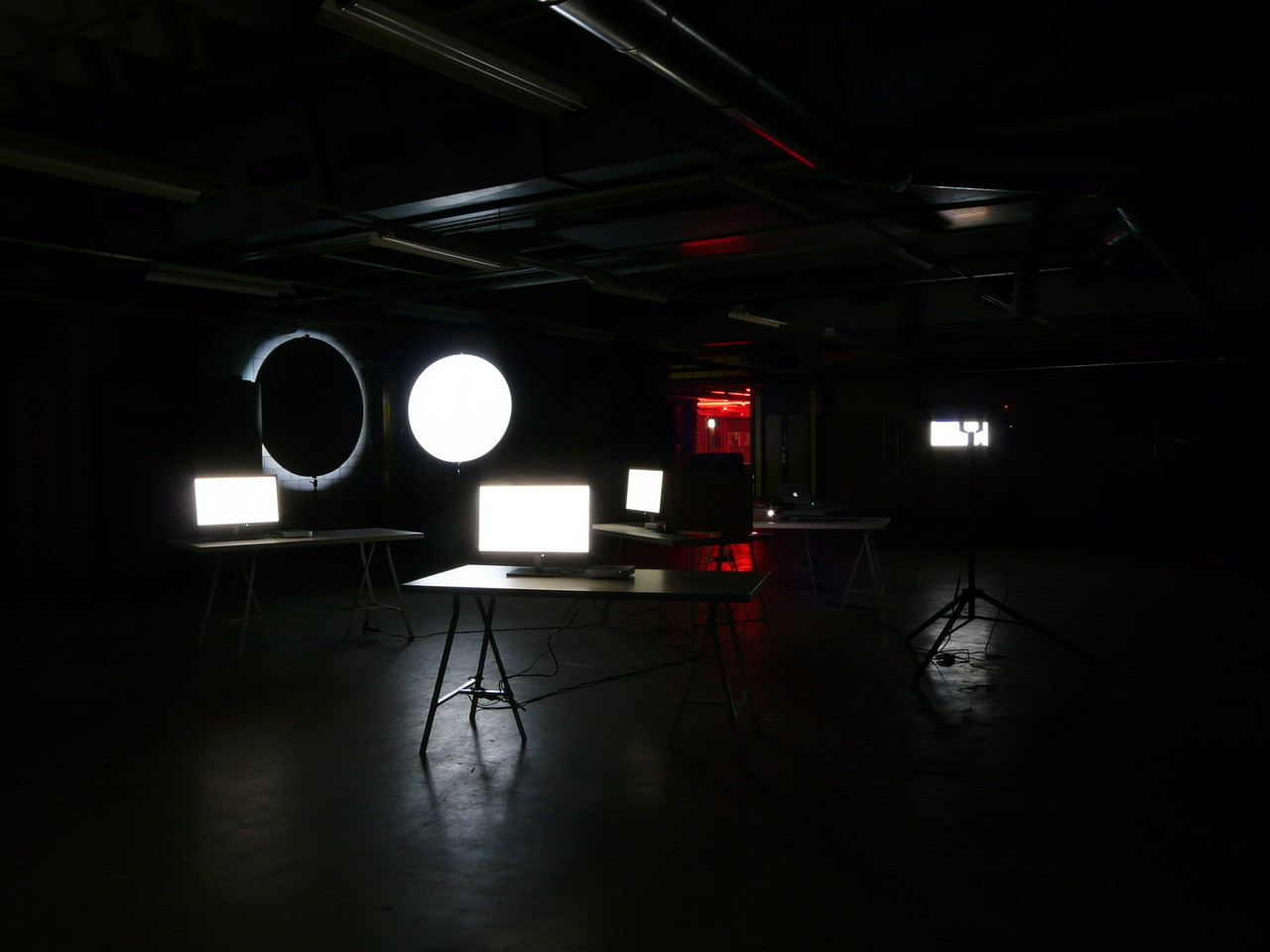
-
All images Ch. Guignard.
Monday, June 19. 2017
Sucking carbon from the air | #device #environment
Note: the following post has been widely reblogged recently. The reason why I did wait a bit before archiving it in | rblg.
It interests me as a king of "device" that can handle environmental parameters. In this sense, it has undoubtedly architectural characteristics and could extend itself into an "architectural device". Think here for exemple about the ongoing Jade Eco Park by Philippe Rahm architectes, filled with devices in the competition proposal. Or to move less further about our own work, with small "environmental devices" like Perpetual (Tropical) SUNSHINE, Satellite Daylight, etc. Architecture as device like Public Platform of Future Past, I-Weather as Deep Space Public Lighting or Heterochrony, or even data tools like Deterritorialized Living.
As a matter of fact, there is a "devices" tag in this blog for this precise reason, to give references for trhese king of architectures that trigger modification in the environment.
Via Science
-----
In Switzerland, a giant new machine is sucking carbon directly from the air



The world's first commercial plant for capturing carbon dioxide directly from the air opened yesterday, refueling a debate about whether the technology can truly play a significant role in removing greenhouse gases already in the atmosphere. The Climeworks AG facility near Zurich becomes the first ever to capture CO2 at industrial scale from air and sell it directly to a buyer.
Developers say the plant will capture about 900 tons of CO2 annually — or the approximate level released from 200 cars — and pipe the gas to help grow vegetables.
While the amount of CO2 is a small fraction of what firms and climate advocates hope to trap at large fossil fuel plants, Climeworks says its venture is a first step in their goal to capture 1 percent of the world's global CO2 emissions with similar technology. To do so, there would need to be about 250,000 similar plants, the company says.

"Highly scalable negative emission technologies are crucial if we are to stay below the 2-degree target [for global temperature rise] of the international community," said Christoph Gebald, co-founder and managing director of Climeworks. The plant sits on top of a waste heat recovery facility that powers the process. Fans push air through a filter system that collects CO2. When the filter is saturated, CO2 is separated at temperatures above 100 degrees Celsius.
The gas is then sent through an underground pipeline to a greenhouse operated by Gebrüder Meier Primanatura AG to help grow vegetables, like tomatoes and cucumbers.
Gebald and Climeworks co-founder Jan Wurzbacher said the CO2 could have a variety of other uses, such as carbonating beverages. They established Climeworks in 2009 after working on air capture during postgraduate studies in Zurich.
The new plant is intended to run as a three-year demonstration project, they said. In the next year, the company said it plans to launch additional commercial ventures, including some that would bury gas underground to achieve negative emissions.
"With the energy and economic data from the plant, we can make reliable calculations for other, larger projects," said Wurzbacher.
Note: with interesting critical comments below concerning the real sustainable effect by Howard Herzog (MIT).
'Sideshow'
There are many critics of air capture technology who say it would be much cheaper to perfect carbon capture directly at fossil fuel plants and keep CO2 out of the air in the first place. Among the skeptics are Massachusetts Institute of Technology senior research engineer Howard Herzog, who called it a "sideshow" during a Washington event earlier this year. He estimated that total system costs for air capture could be as much as $1,000 per ton of CO2, or about 10 times the cost of carbon removal at a fossil fuel plant.
"At that price, it is ridiculous to think about right now. We have so many other ways to do it that are so much cheaper," Herzog said. He did not comment specifically on Climeworks but noted that the cost for air capture is high partly because CO2 is diffuse in the air, while it is more concentrated in the stream from a fossil fuel plant. Climeworks did not immediately release detailed information on its costs but said in a statement that the Swiss Federal Office of Energy would assist in financing. The European Union also provided funding.
In 2015, the National Academies of Sciences, Engineering and Medicine released a report saying climate intervention technologies like air capture were not a substitute for reducing emissions. Last year, two European scientists wrote in the journal Science that air capture and other "negative emissions" technologies are an "unjust gamble," distracting the world from viable climate solutions (Greenwire, Oct. 14, 2016).
Engineers have been toying with the technology for years, and many say it is a needed option to keep temperatures to controllable levels. It's just a matter of lowering costs, supporters say. More than a decade ago, entrepreneur Richard Branson launched the Virgin Earth Challenge and offered $25 million to the builder of a viable air capture design.
Climeworks was a finalist in that competition, as were companies like Carbon Engineering, which is backed by Microsoft Corp. co-founder Bill Gates and is testing air capture at a pilot plant in British Columbia.
-----
...
And let's also mention while we are here the similar device ("smog removal" for China cities) made by Studio Roosegaarde, Smog Free Project.
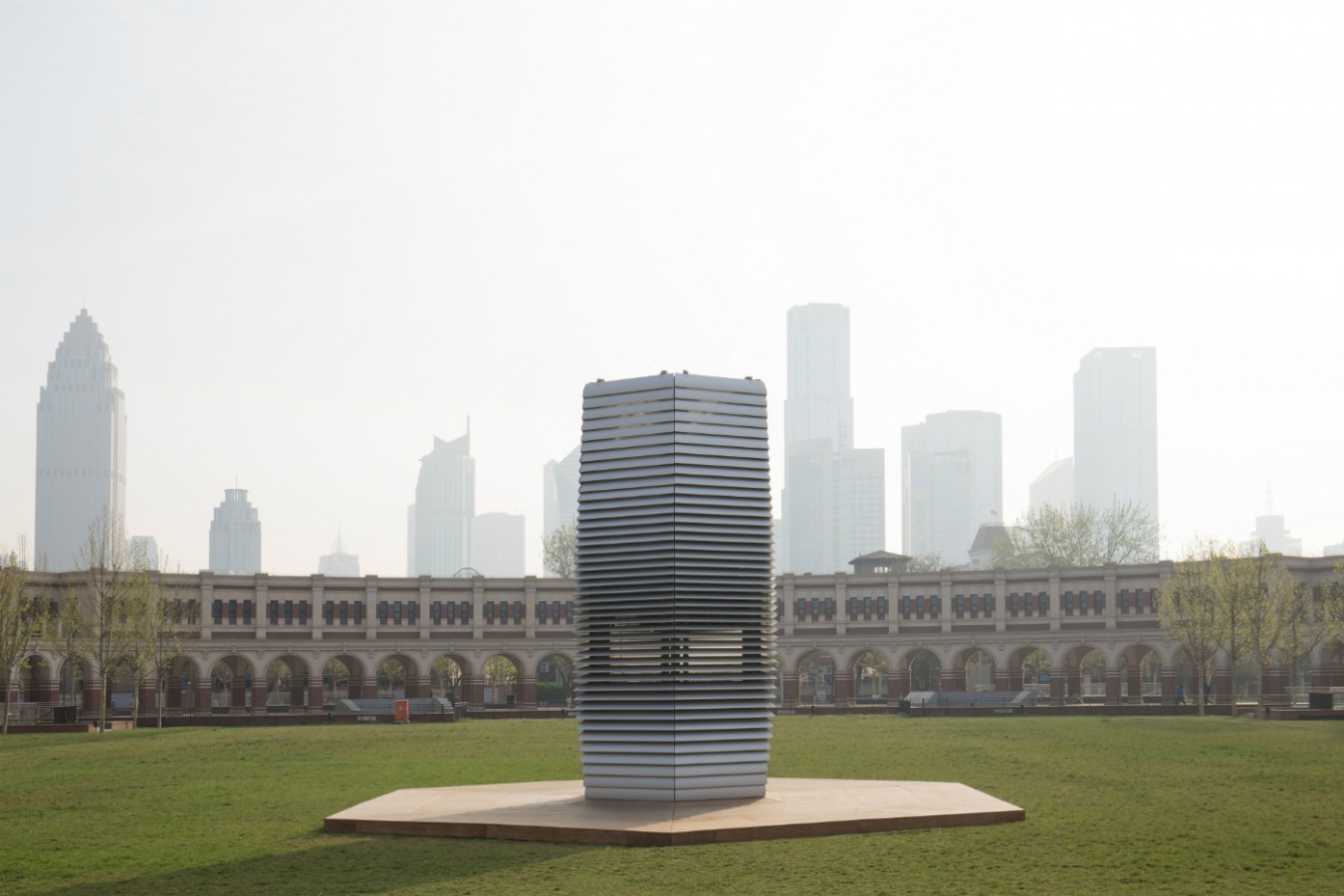
Related Links:
Friday, May 12. 2017
The World’s Largest Artificial Sun Could Help Generate Clean Fuel | #conditioning #energy
Note: an amazing climatic device.
For clean energy experimentation here. Would have loved to have that kind of devices (and budget ;)) when we put in place Perpetual Tropical Sunshine !
-----

Don’t lean against the light switch at the Synlight building in Jülich, Germany—if you do, things might get rather hotter than you can cope with.
The new facility is home to what researchers at the German Aerospace Center, known as DLR, have called the “world's largest artificial Sun.” Across a single wall in the building sit a series of Xenon short-arc lamps—the kind used in large cinemas to project movies. But in a huge cinema there would be one lamp. Here, spread across a surface 45 feet high and 52 feet wide, there are 140.
When all those lamps are switched on and focused on the same 20 by 20 centimeter spot, they create light that’s 10,000 times more intense than solar radiation anywhere on Earth. At the center, temperatures reach over 3,000 °C.
The setup is being used to mimic large concentrated solar power plants, which use a field full of adjustable mirrors to focus sunlight into a small incredibly hot area, where it melts salt that is then used to create steam and generate electricity.
Researchers at DLR, though, think that a similar mirror setup could be used to power a high-energy reaction where hydrogen is extracted from water vapor. In theory, that process could supply a constant and affordable source of liquid hydrogen fuel—something that clean energy researchers continue to lust after, because it creates no carbon emissions when burned.
Trouble is, folks at DLR don’t quite yet know how to make it happen. So they built a laboratory rig to allow them to tinker with the process using artificial light instead of reflected sunlight—a setup which, as Gizmodo notes, uses the equivalent of a household's entire year of electricity during just four hours of operation, somewhat belying its green aspirations.
Of course, it’s far from the first project to aim to create hydrogen fuel cheaply: artificial photosynthesis, seawater electrolysis, biomass reactions, and many other projects have all tried—and so far failed—to make it a cost-effective exercise. So now it’s over to the Sun. Or a fake one, for now.
(Read more: DLR, Gizmodo, “World’s Largest Solar Thermal Power Plant Delivers Power for the First Time,” “A Big Leap for an Artificial Leaf,” "A New Source of Hydrogen for Fuel-Cell Vehicles")
fabric | rblg
This blog is the survey website of fabric | ch - studio for architecture, interaction and research.
We curate and reblog articles, researches, writings, exhibitions and projects that we notice and find interesting during our everyday practice and readings.
Most articles concern the intertwined fields of architecture, territory, art, interaction design, thinking and science. From time to time, we also publish documentation about our own work and research, immersed among these related resources and inspirations.
This website is used by fabric | ch as archive, references and resources. It is shared with all those interested in the same topics as we are, in the hope that they will also find valuable references and content in it.
Quicksearch
Categories
Calendar
|
|
April '24 | |||||
| Mon | Tue | Wed | Thu | Fri | Sat | Sun |
| 1 | 2 | 3 | 4 | 5 | 6 | 7 |
| 8 | 9 | 10 | 11 | 12 | 13 | 14 |
| 15 | 16 | 17 | 18 | 19 | 20 | 21 |
| 22 | 23 | 24 | 25 | 26 | 27 | 28 |
| 29 | 30 | |||||














